Today I want to share with you our journey through Tunisia, or rather its exact plan! In total, we covered a whopping 2764 kilometers! It was an incredible adventure during which we had the chance to see not only the desert and the oases within it but also intriguing monuments from other cultures and truly iconic places related to “Star Wars.” Ready? Let’s start!
Table of Contents
Djerba
First, we landed on Djerba. It’s a Tunisian island connected to the mainland by a causeway located in the Gulf of Gabès. You can learn more about Djerba in this post that I prepared for you. We stayed here, and after exploring Djerba, we headed to El Djem (El Jem) – the journey took 4 hours and covered 330 kilometers.
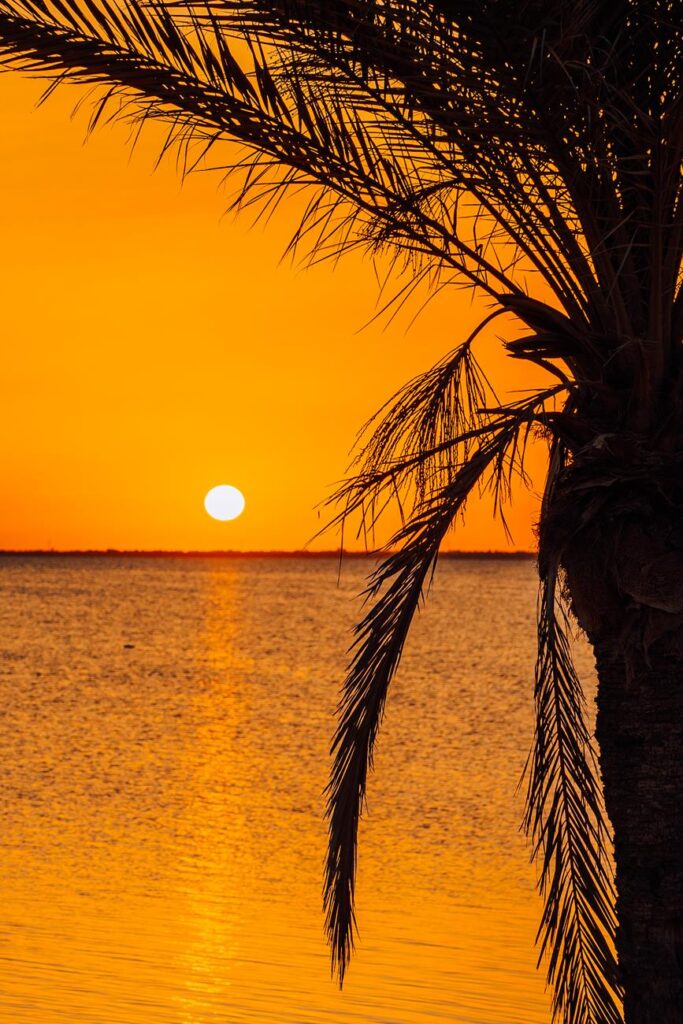
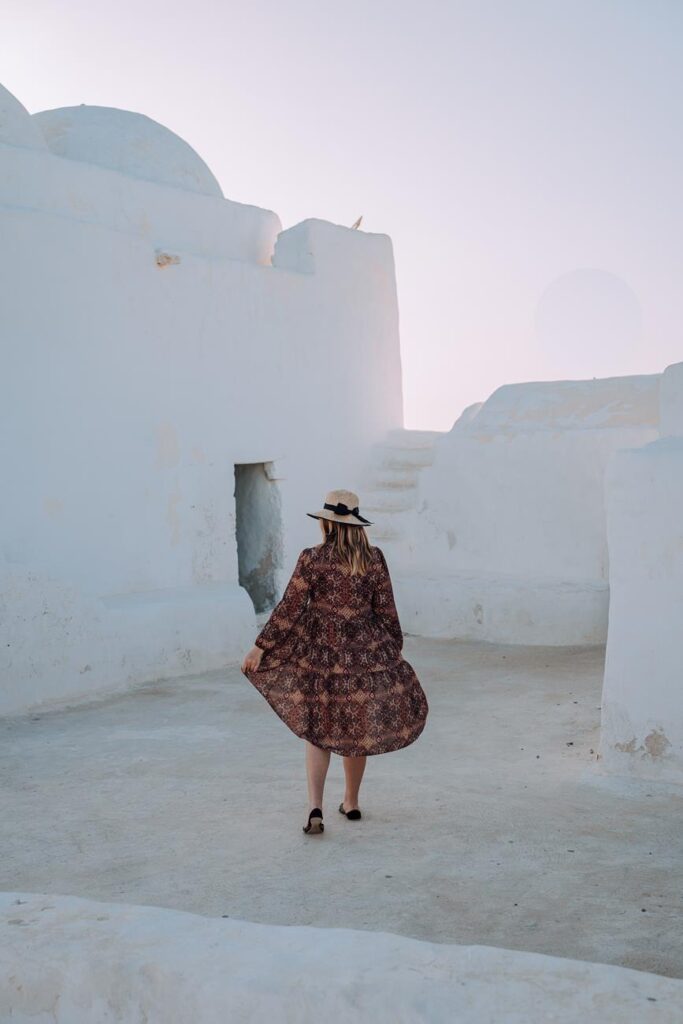
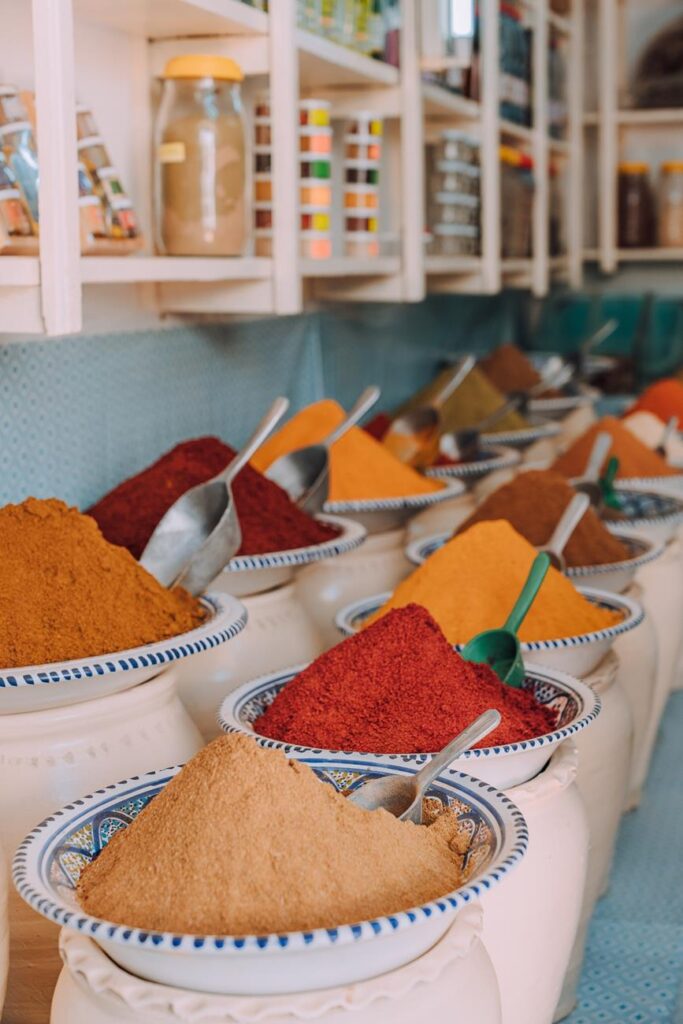
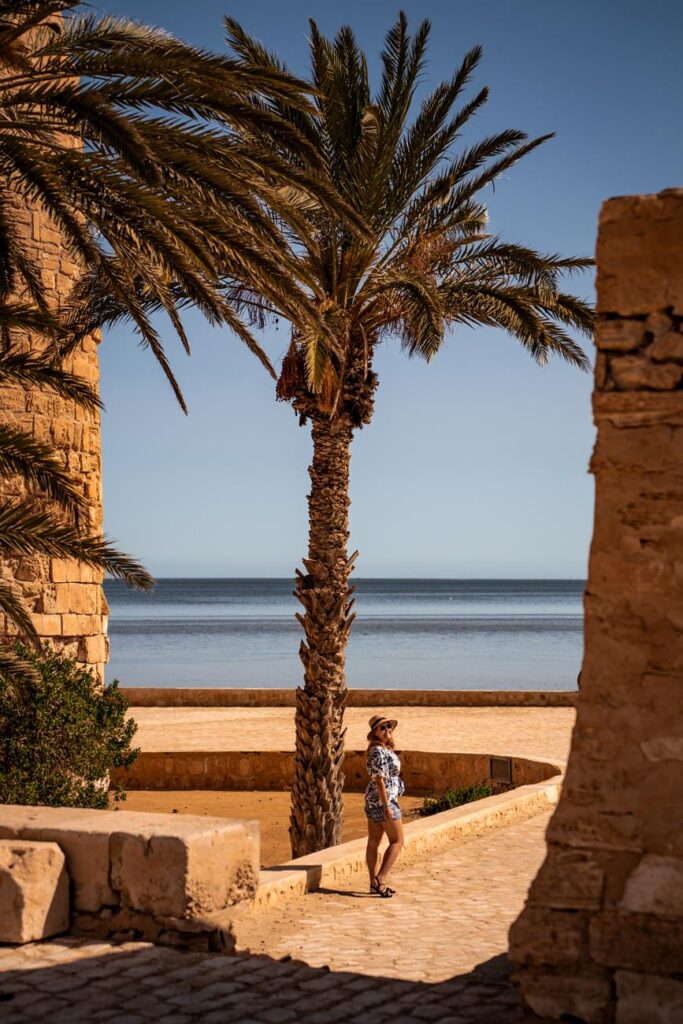
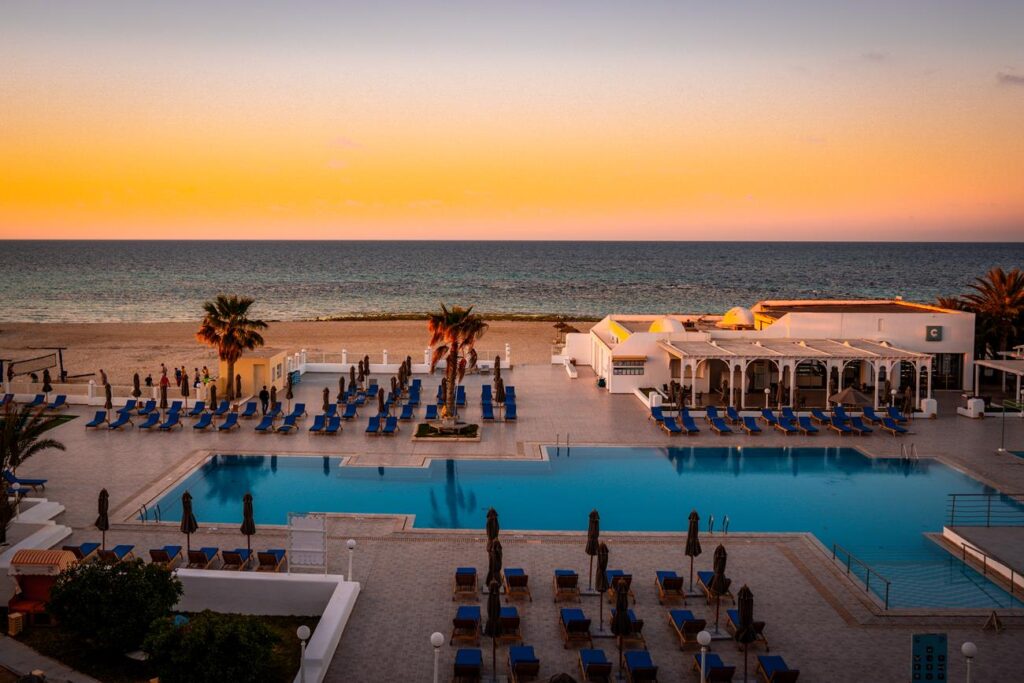
El Djem (El Jem)
El Djem is a small town with a population of 22,000 people, which was once the Roman city of Thysdrus, the most important in the region after Carthage. Its main attraction is the remains of the amphitheater listed as a UNESCO World Heritage Site!
Amphitheater
The amphitheater in El Djem is the third largest in the world, better preserved than the Roman Colosseum. It is the most impressive structure of its kind in the entire North Africa. Built around 238 AD, at its peak, it could accommodate up to 35,000 spectators. It is definitely worth taking the time to explore it, if only because of its size!
From El Djem, we then went to Sfax. The journey took us exactly an hour, covering a distance of 75 kilometers.
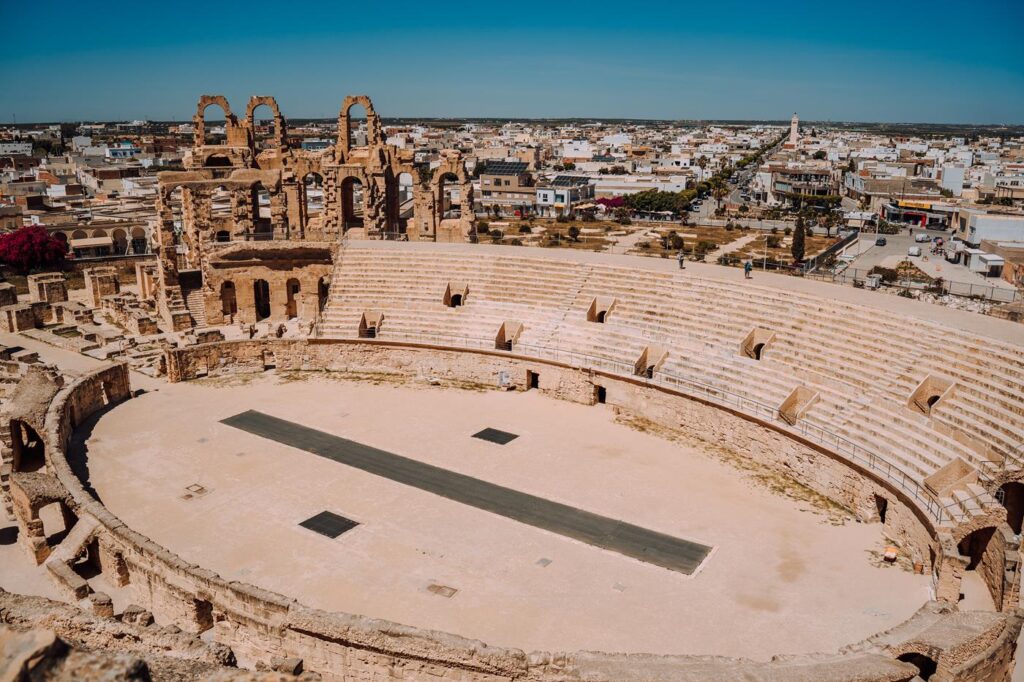
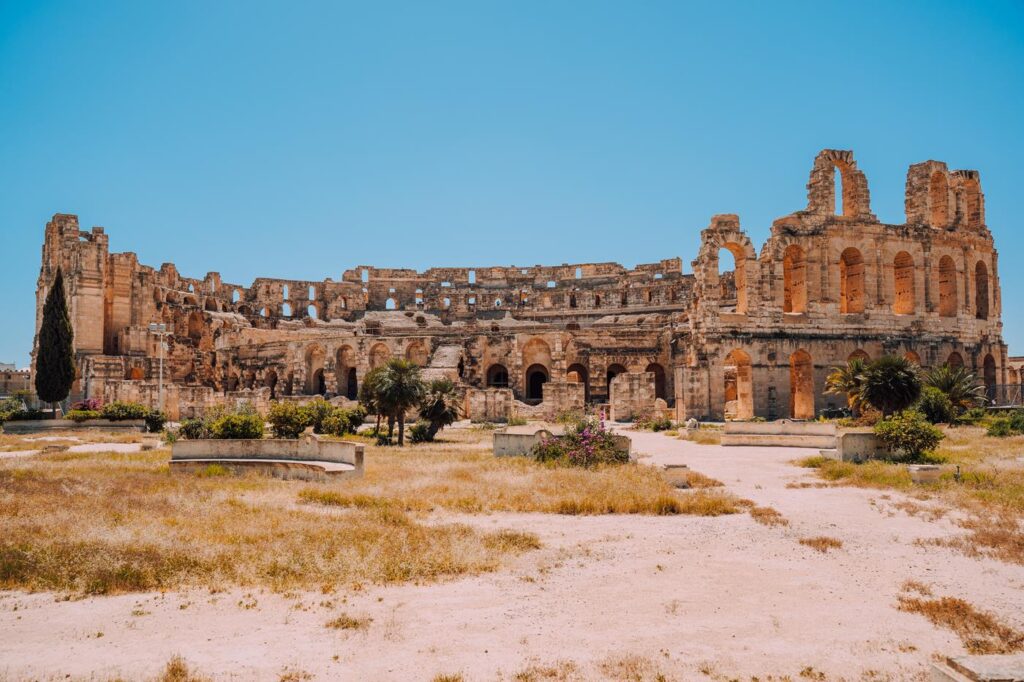
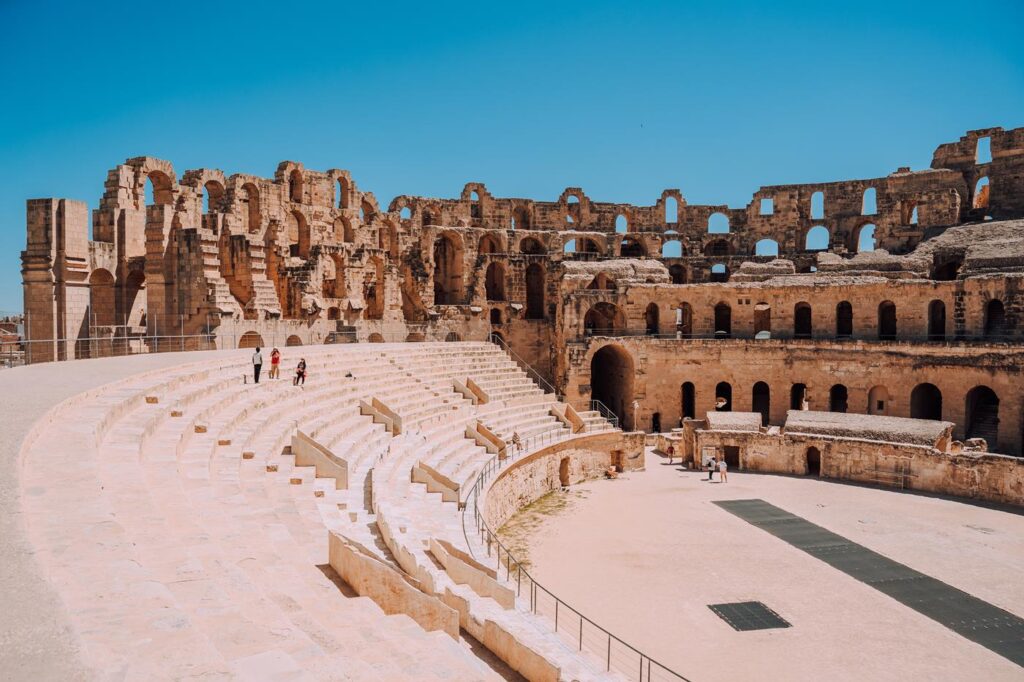
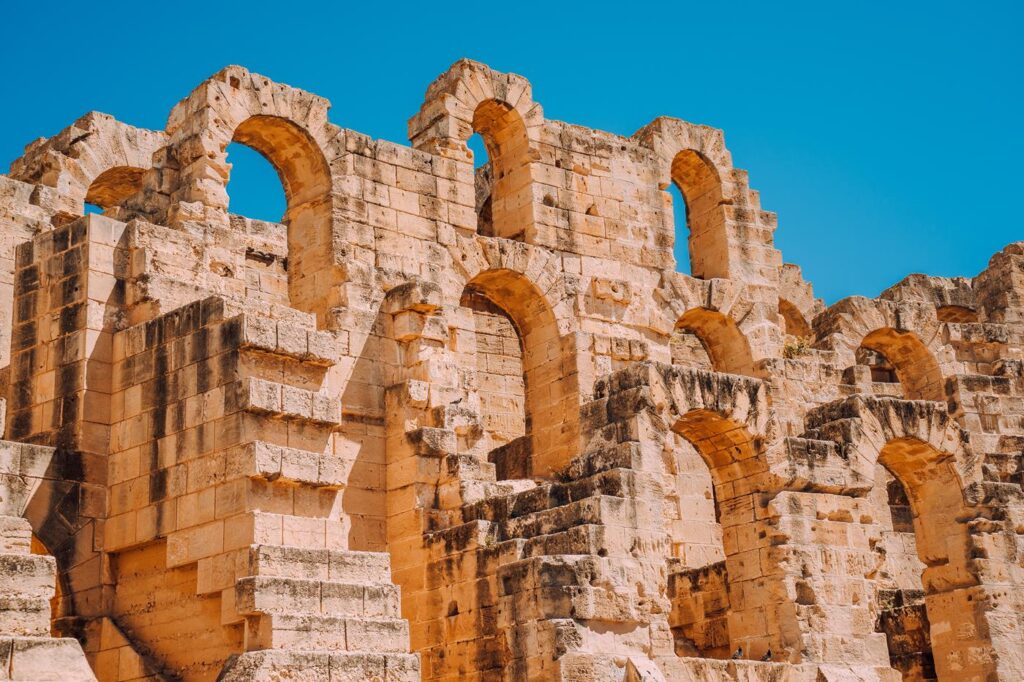
Sfax
Sfax is a charming port city with thick walls surrounding the medina, one of the most beautiful in Tunisia. In Sfax, we stayed at Les Oliviers Palace, a hotel similar to – and located near – this one.
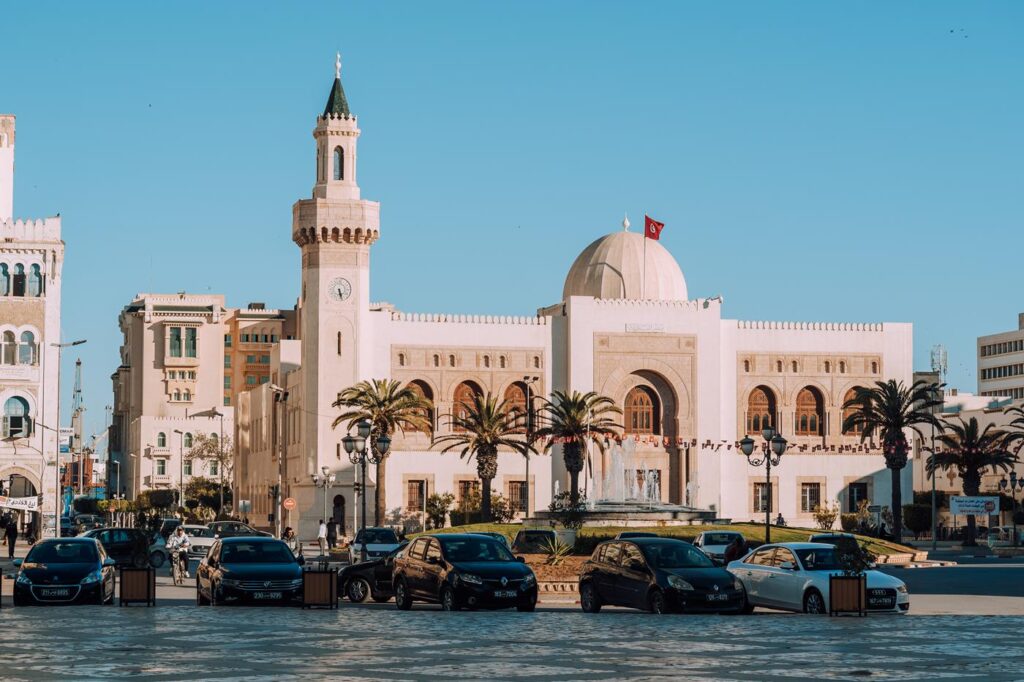
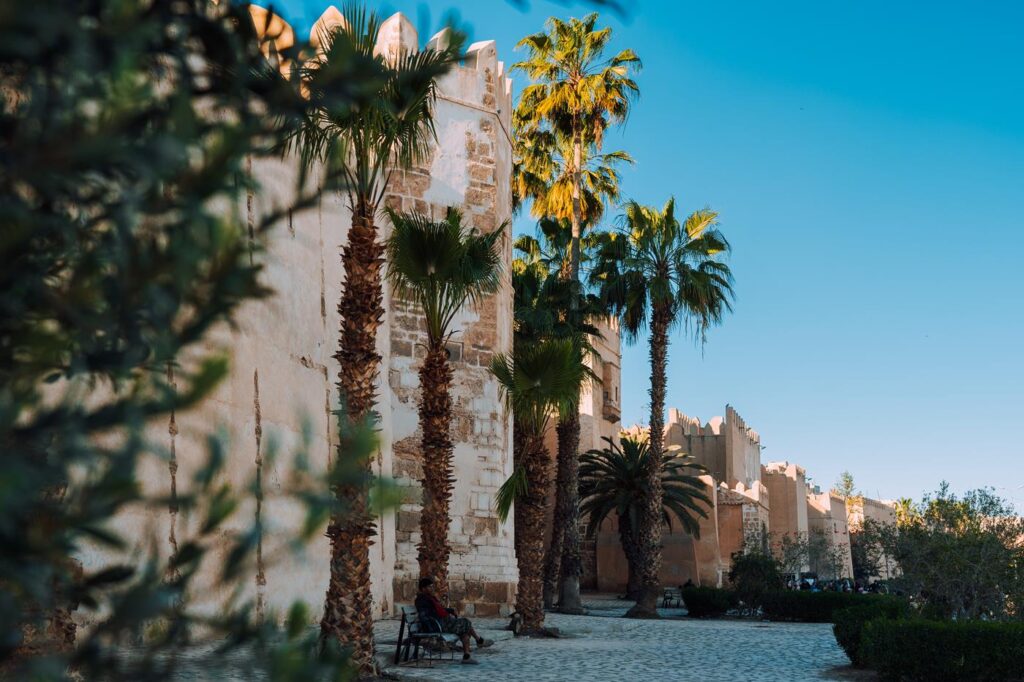
Medina
The famous medina in Sfax was built by Prince Aghlabid Abu Abbass Muhammad between 849 and 851 AD; it is the best-preserved example of Arab-Muslim architecture in the Mediterranean basin. At its center is the Great Mosque from the 9th century. Market streets surround it from its northwest facade, while the rest of the area is occupied by residential neighborhoods.
From Sfax, we headed to Tozeur; the journey took us four hours, during which we covered 350 kilometers!
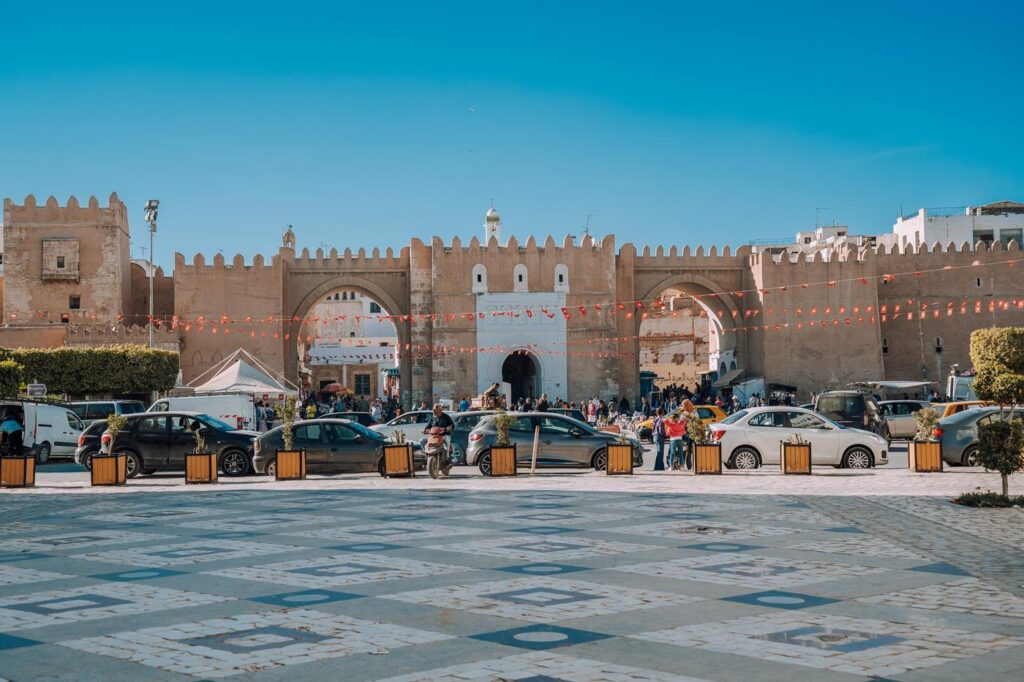
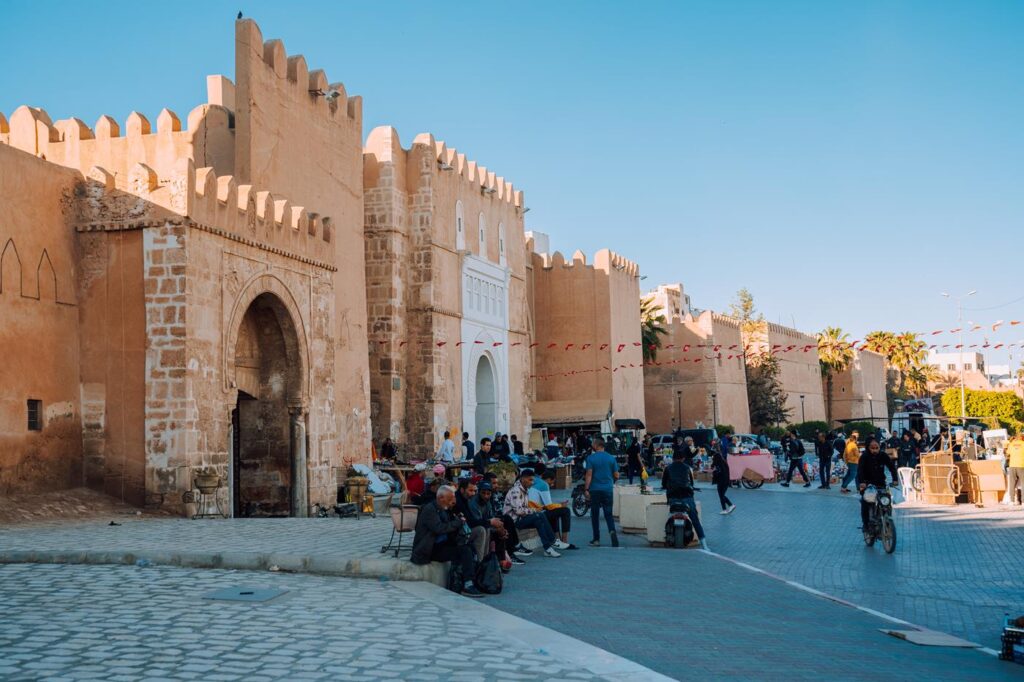
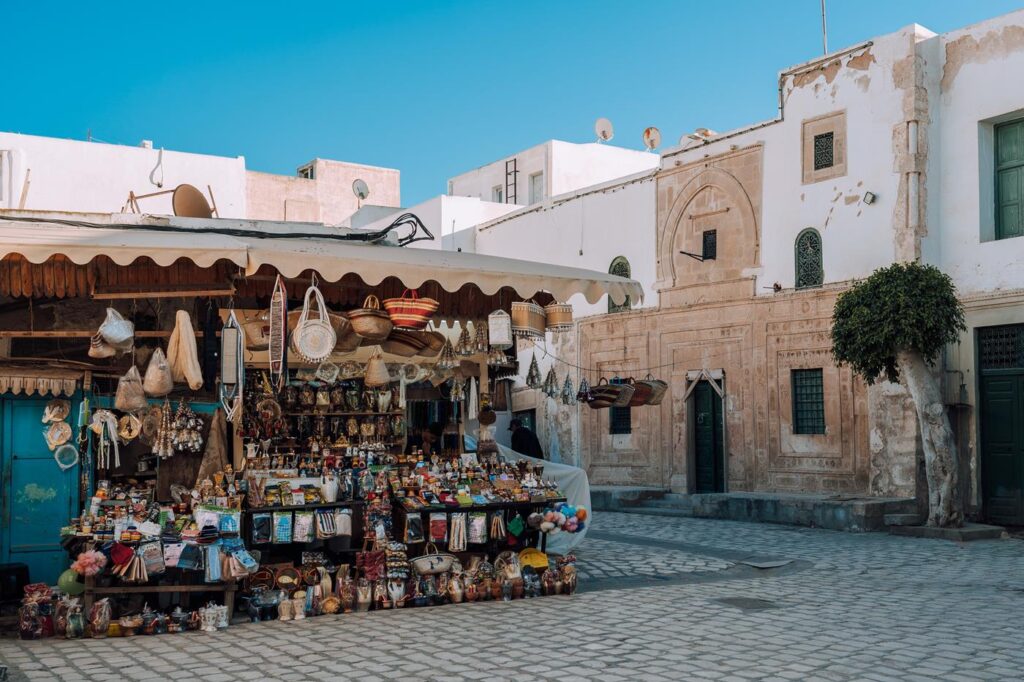
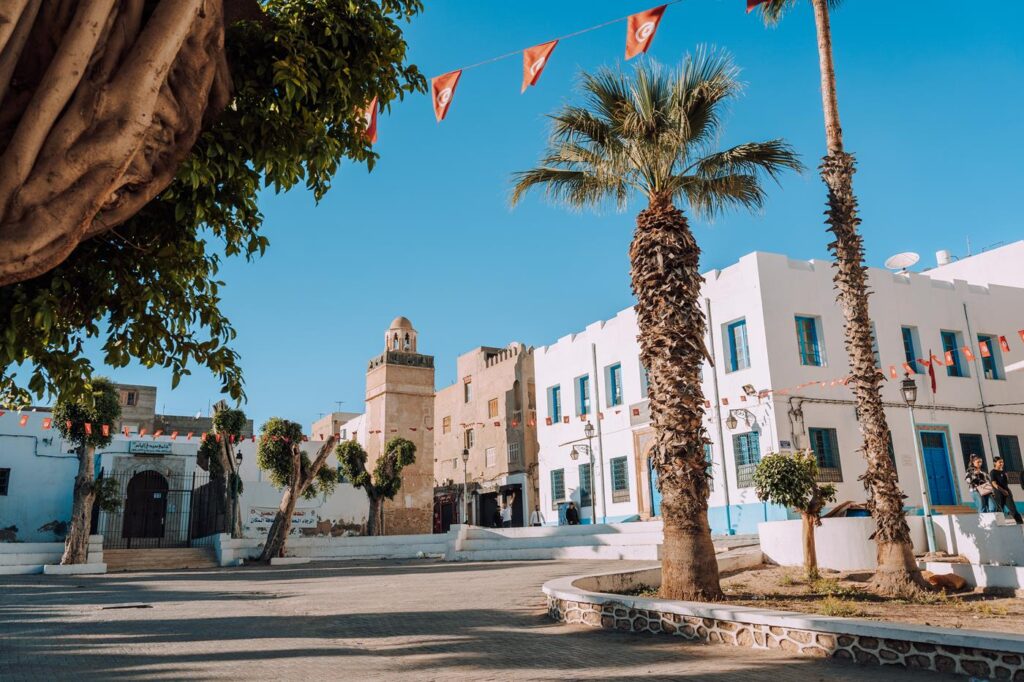
Tozeur
Tozeur is a desert city adjacent to a huge oasis consisting of hundreds of thousands of palm trees. Here, we had the pleasure of staying at the Ras El Aïn hotel near Palm Beach Palace.
Palm Grove Park
Tozeur is home to hundreds of thousands of date palms, making it one of the largest oases in Tunisia. The grove impresses with its unusual size and a variety of vegetation. Within the oasis area rises the Eden Palm Park. After paying the entrance fee, you can walk among the palms with a guide who will tell you the story of these trees and their fruits!
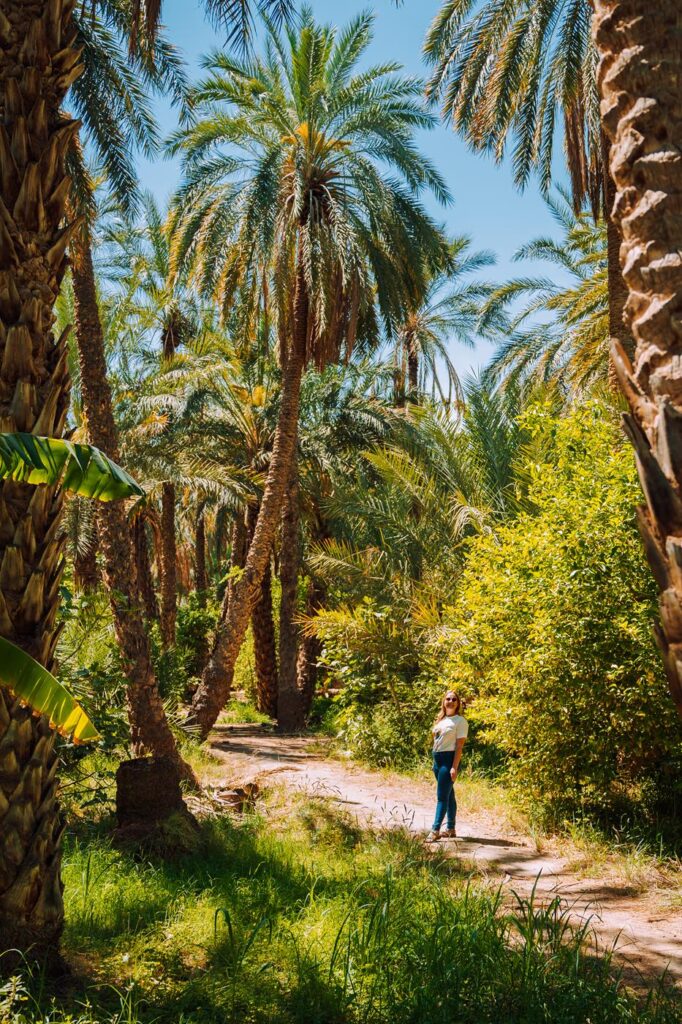
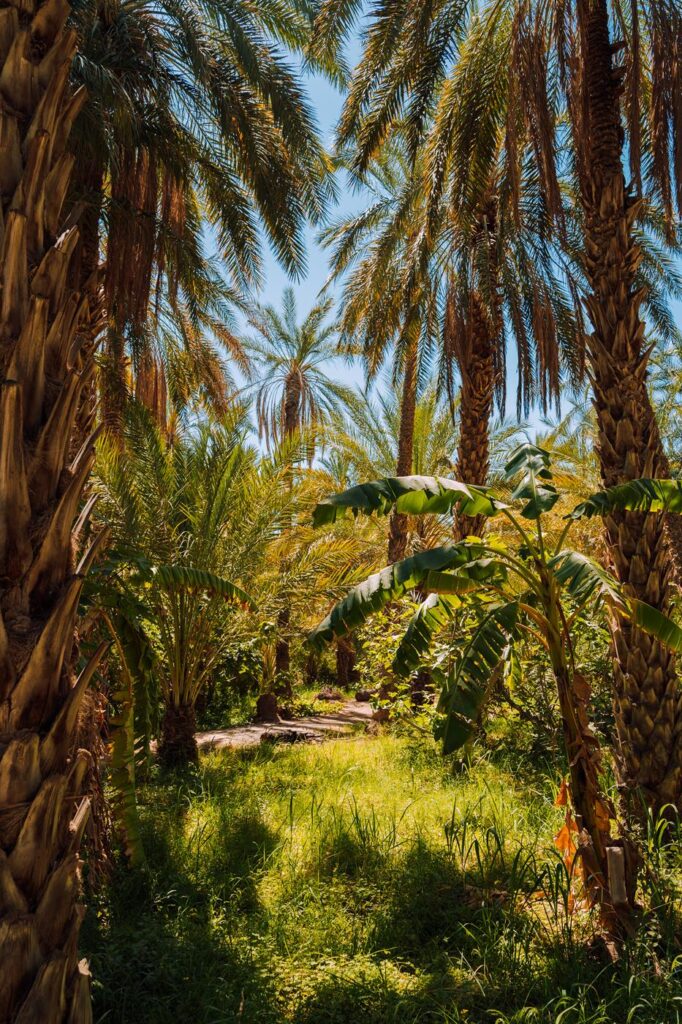
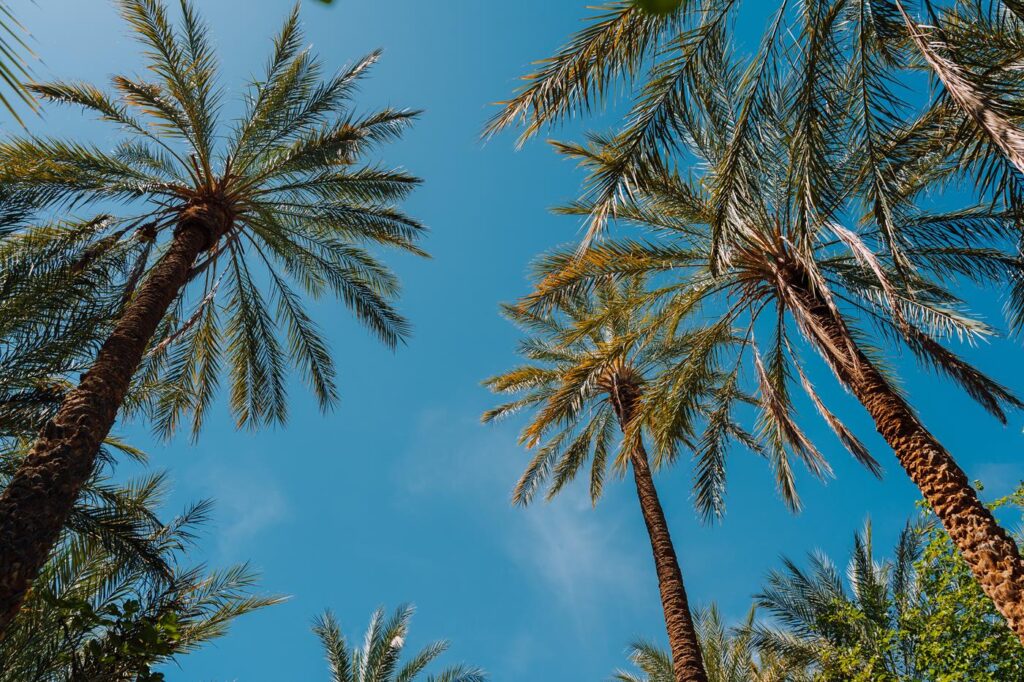
Museum of the Earth
Chak Wak Museum is a place where you can learn about the history of the Earth and humanity – from the Big Bang itself. The exhibitions present all geological epochs in succession. One of the main points of interest are the figures of prehistoric people and animals, including dinosaurs! The exhibitions also lead through the history of religions and specific civilizations. It’s an interesting place for families with children!
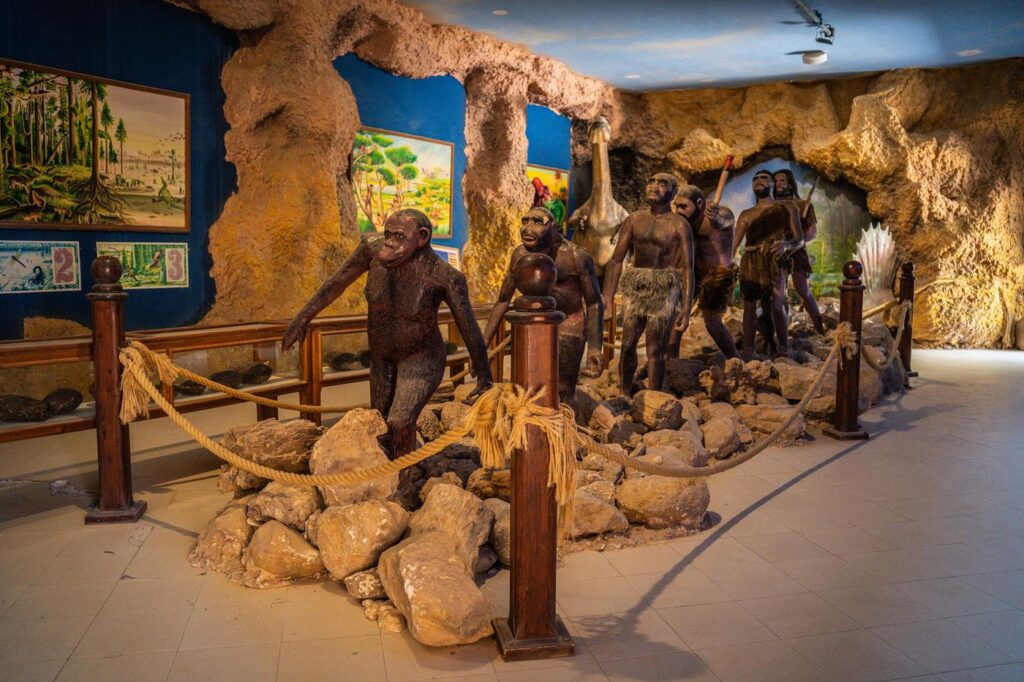
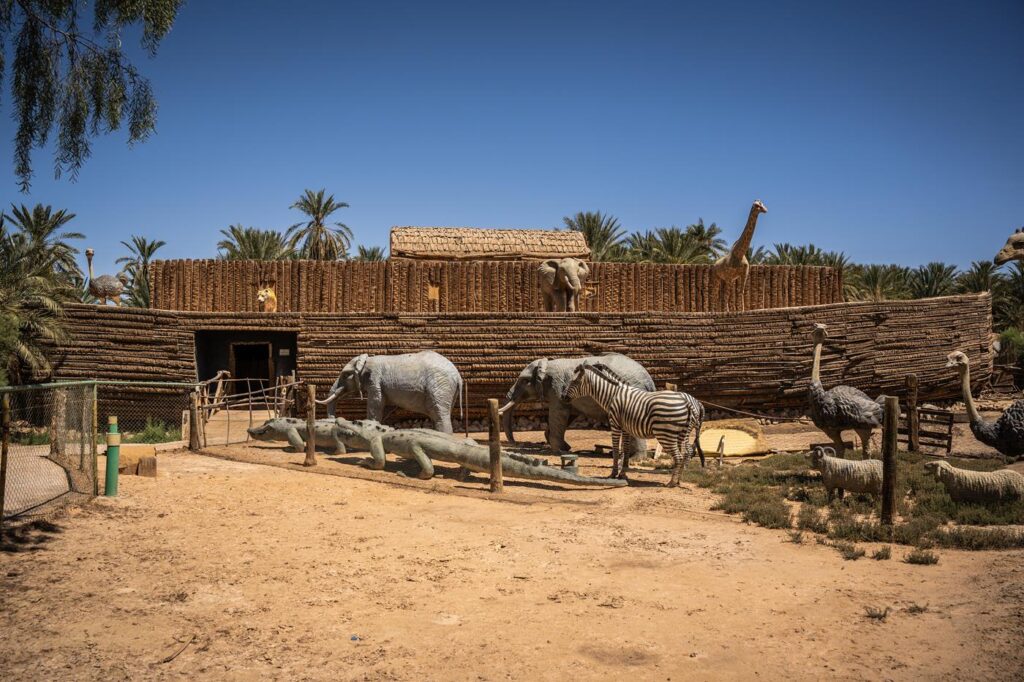
Mos Espa
Located 40 km (and 40 minutes drive) from Tozeur, Mos Espa is a settlement built in the desert by film writers for two productions from the “Star Wars” series: “The Phantom Menace” and “Attack of the Clones”. Empty inside, recognizable buildings stand on the former film set for 40 years. It is a place frequented by tourists, especially science fiction fans.
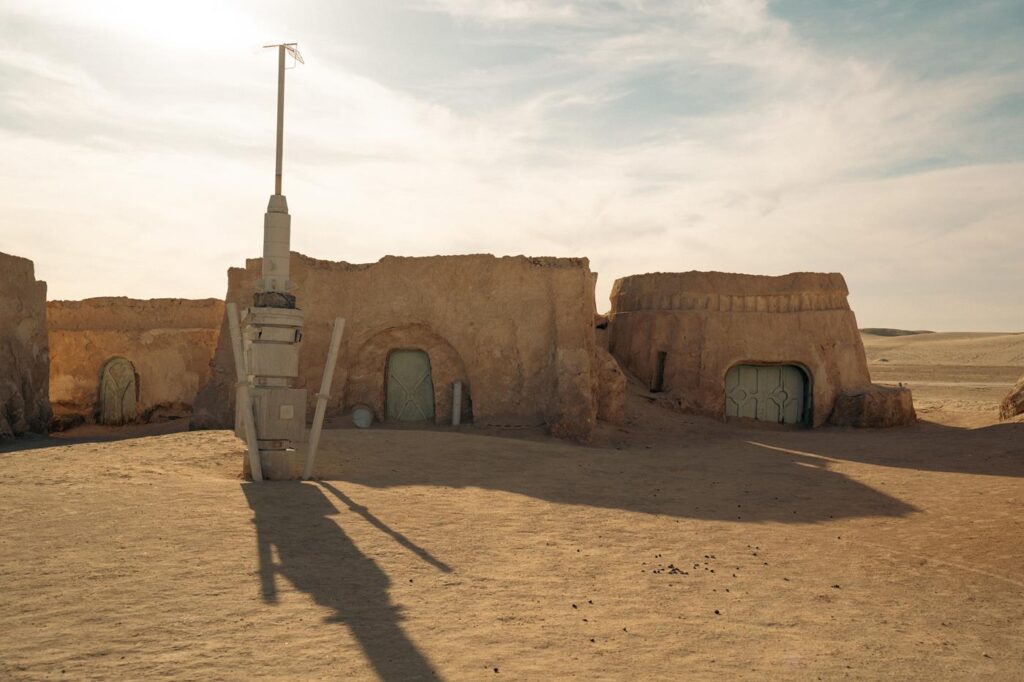
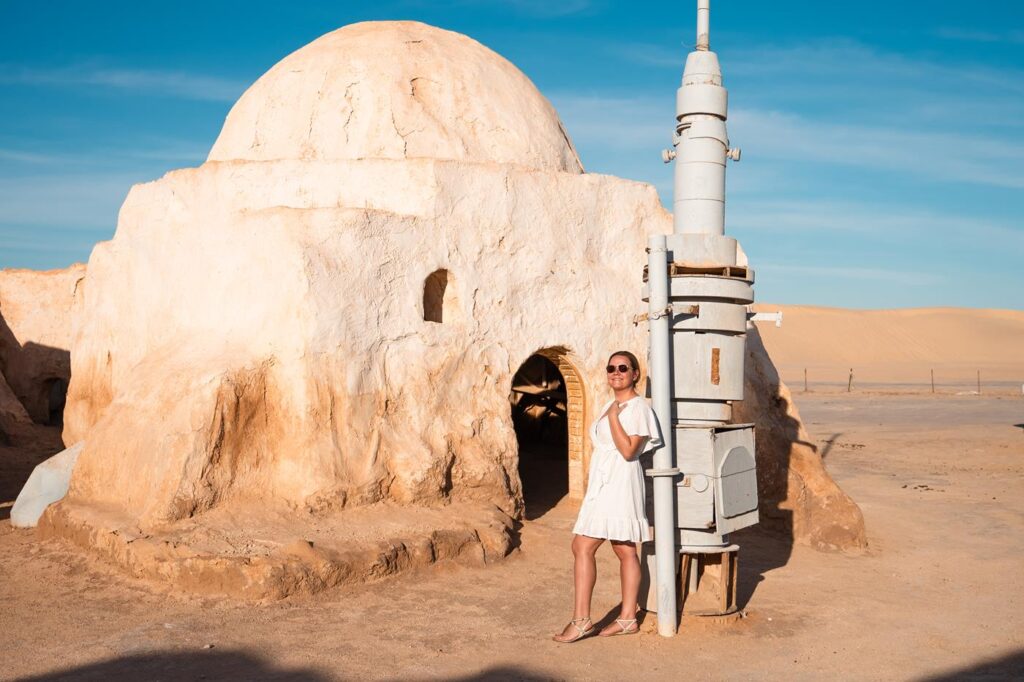
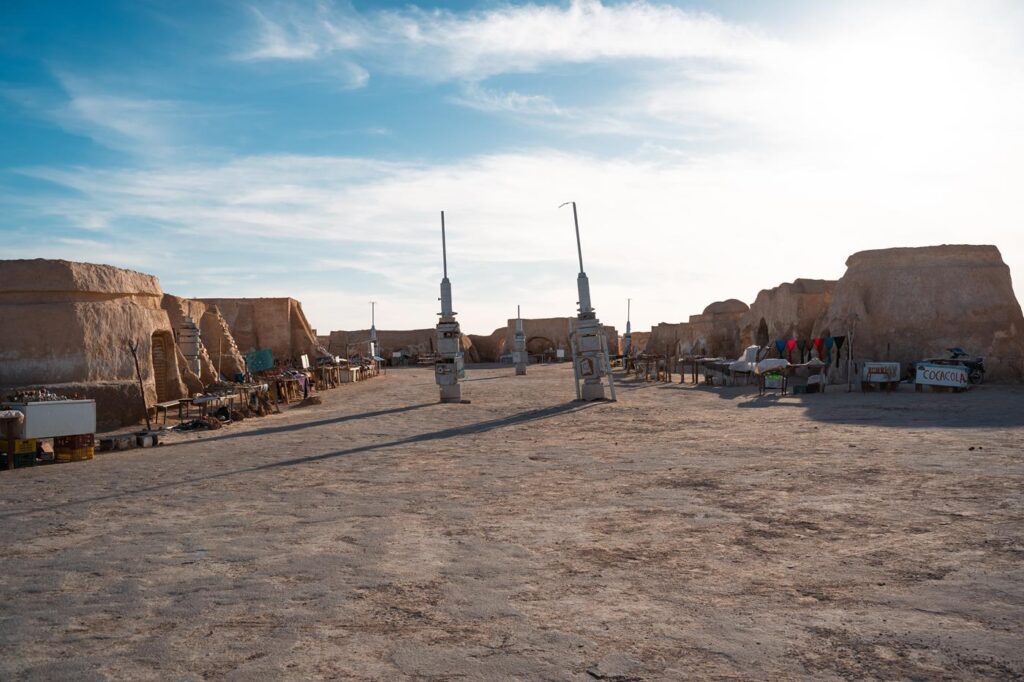
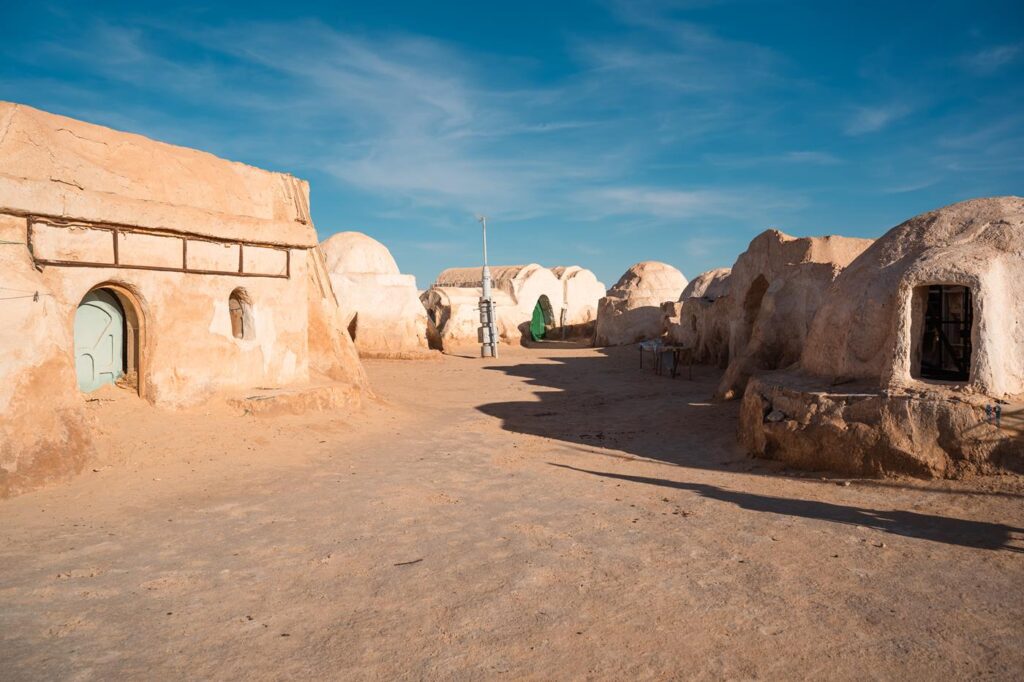
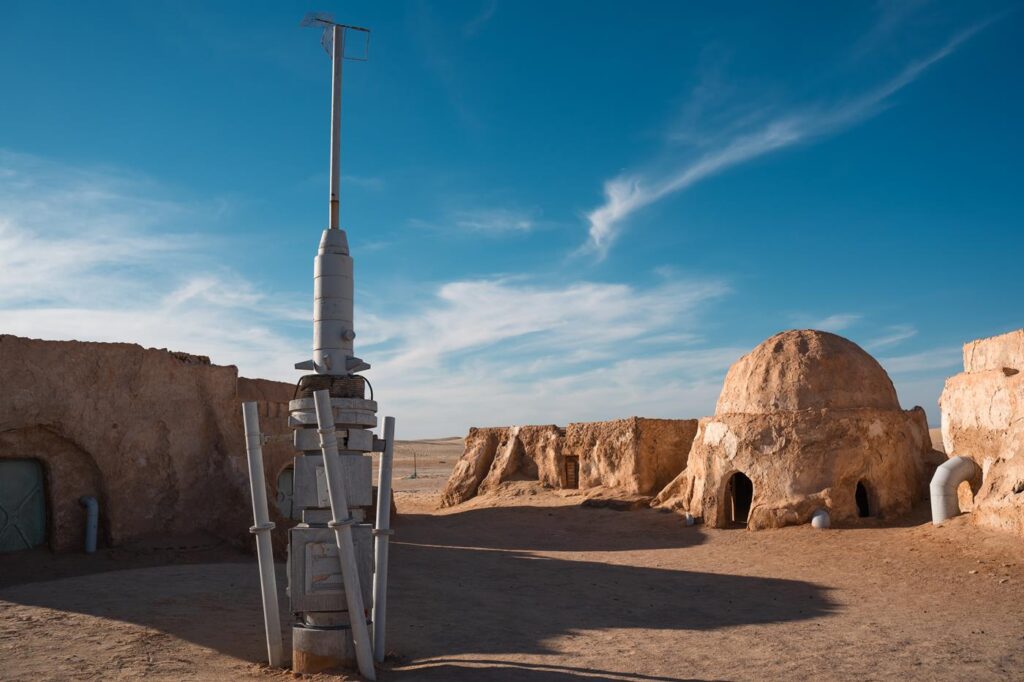
Chebika Oasis
From Tozeur to the mountain oasis of Chebika, it took us 45 minutes (50 km). It is adjacent to abandoned, stone houses that once formed a village. The present water from the springs allowed for the creation and flourishing of a palm grove at the foot of the mentioned old village. From this place, it only takes a few minutes walk to see the Tamerza waterfall. The Chebika Oasis is considered the most beautiful in Tunisia.
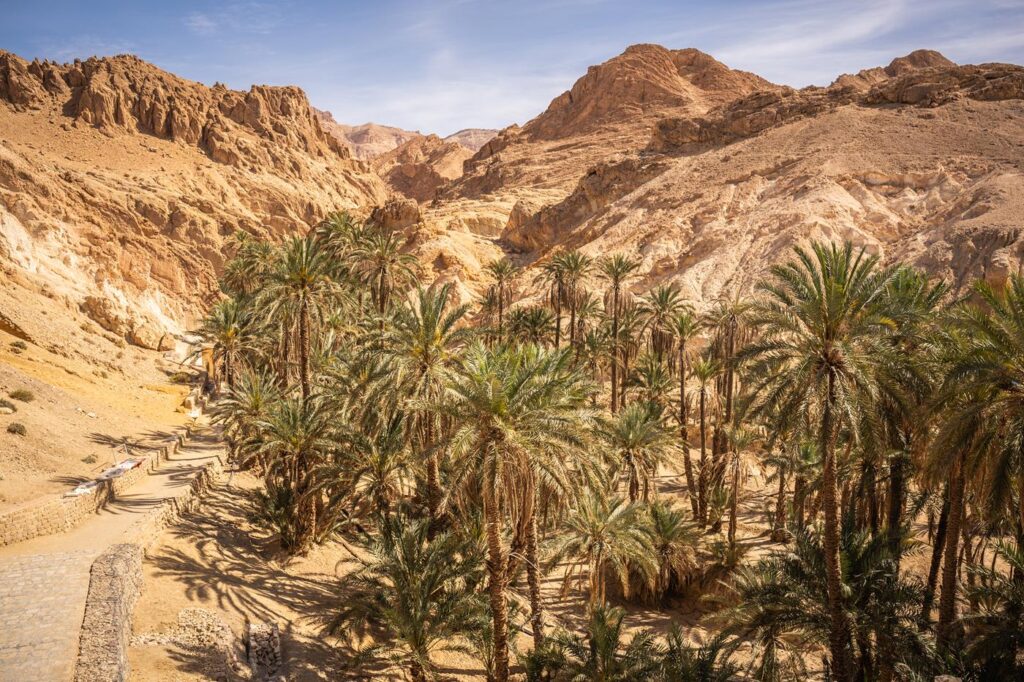
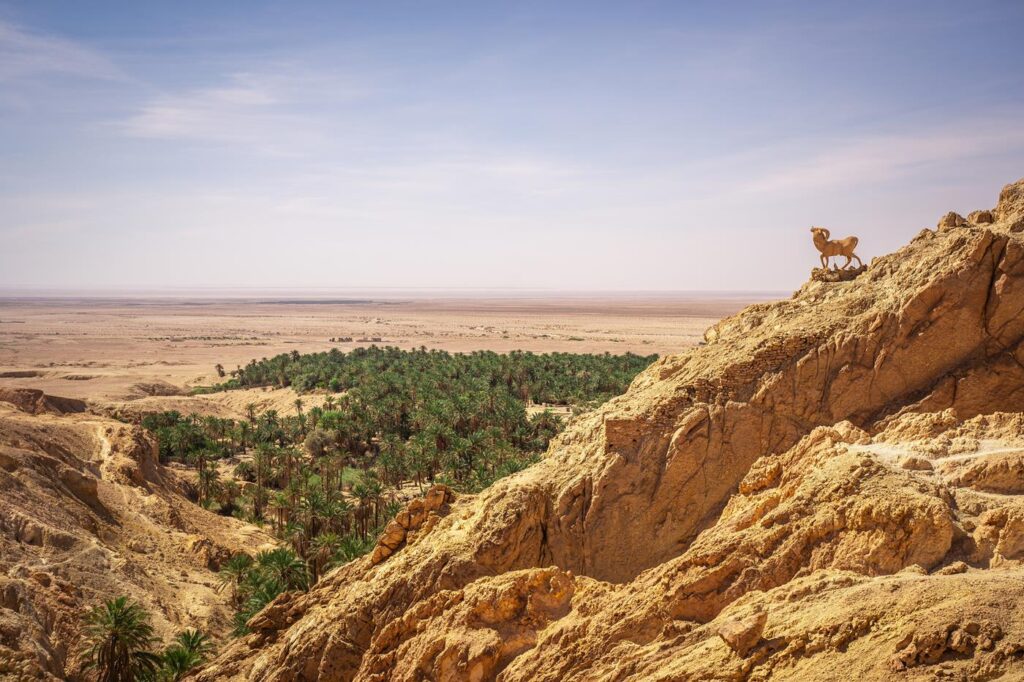
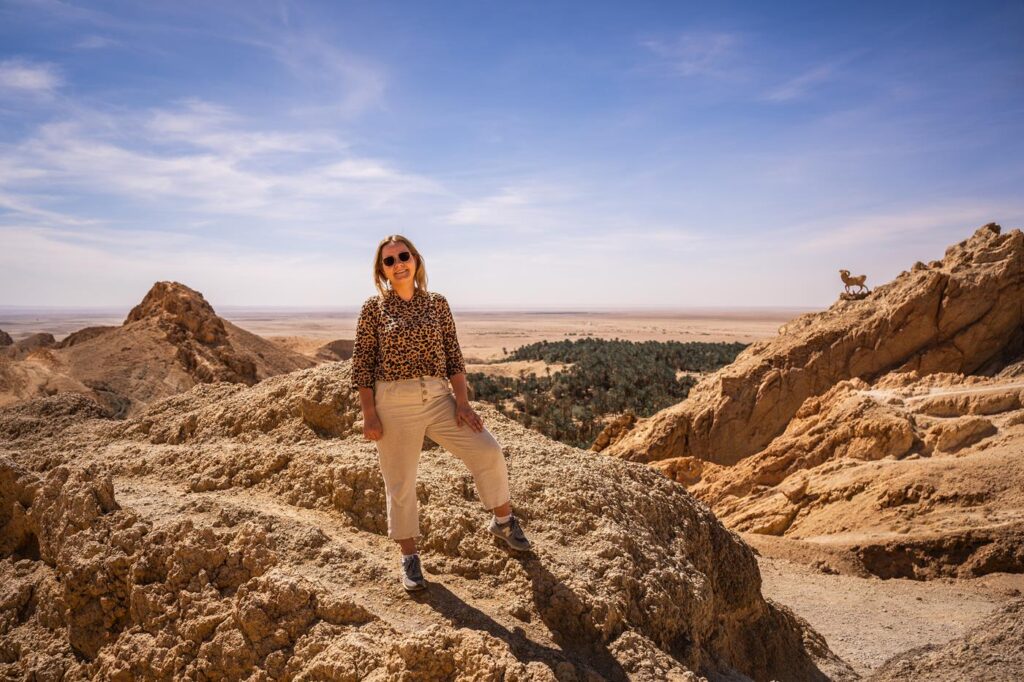
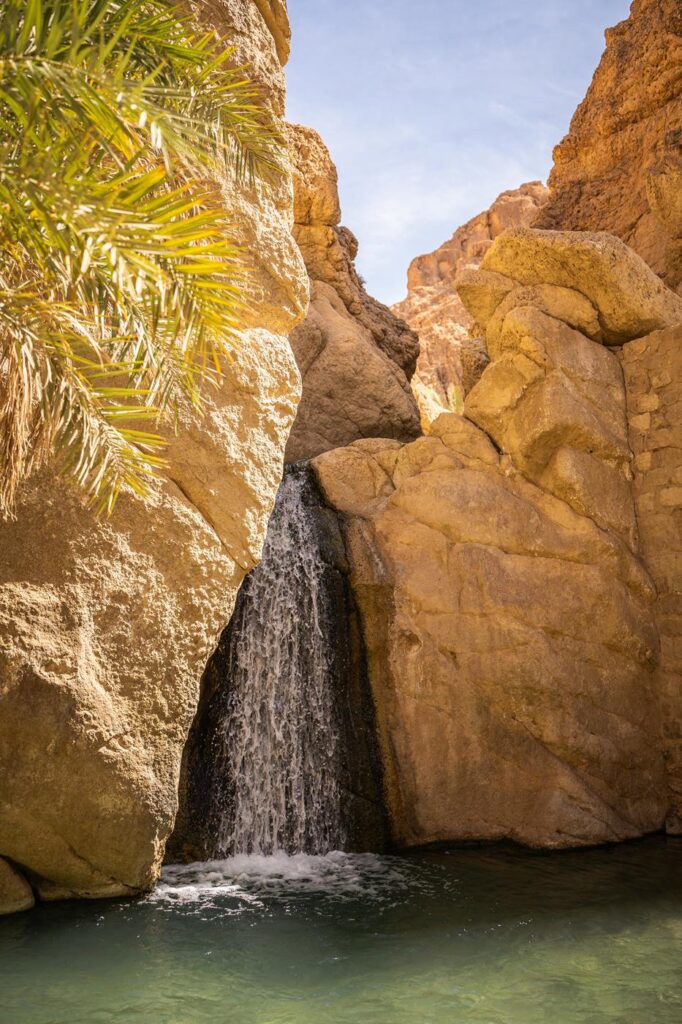
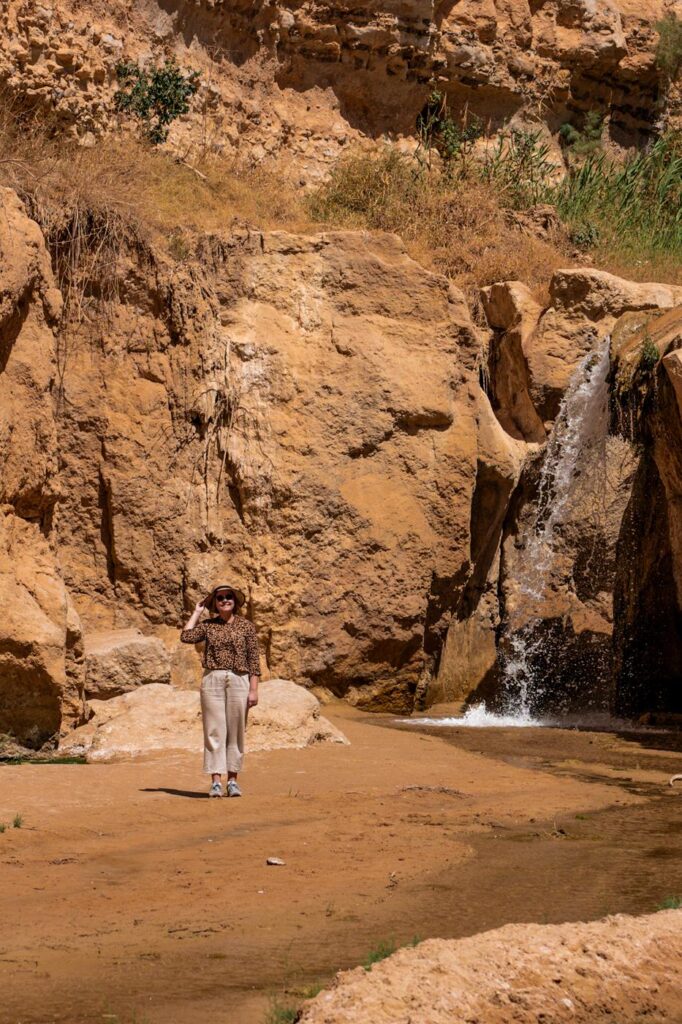
Tozeur – City Tour
Tozeur is famous for its yellow-brown brick and geometric patterns that adorn the facades of most buildings. Narrow, arched streets in the oldest part of the city resemble a maze. The modern tourist zone, on the other hand, is located on the southwestern outskirts of the city.
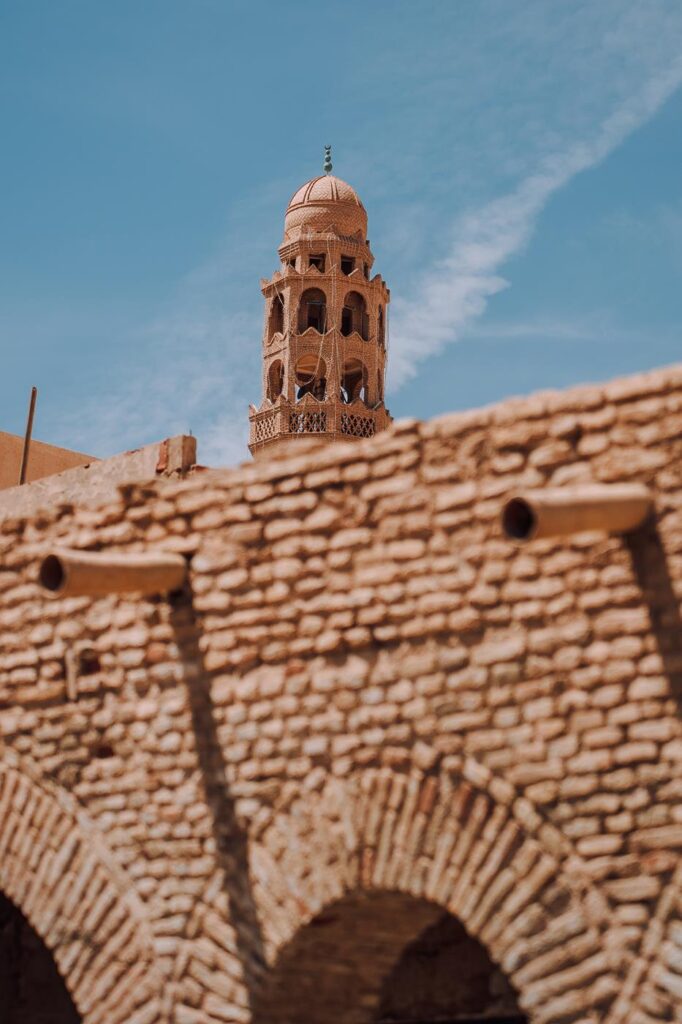
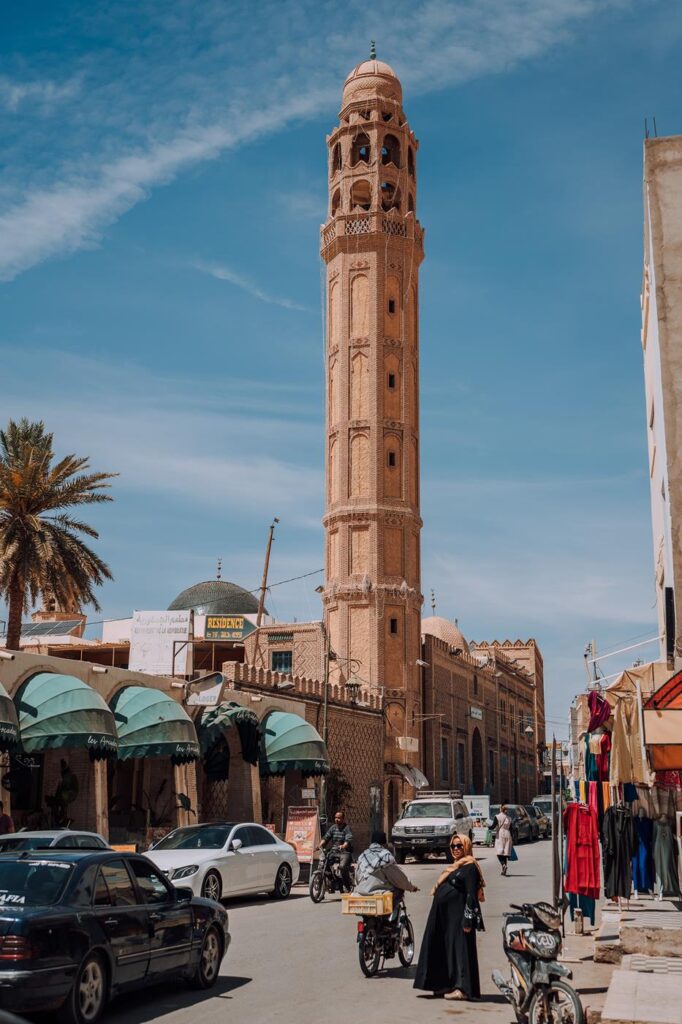
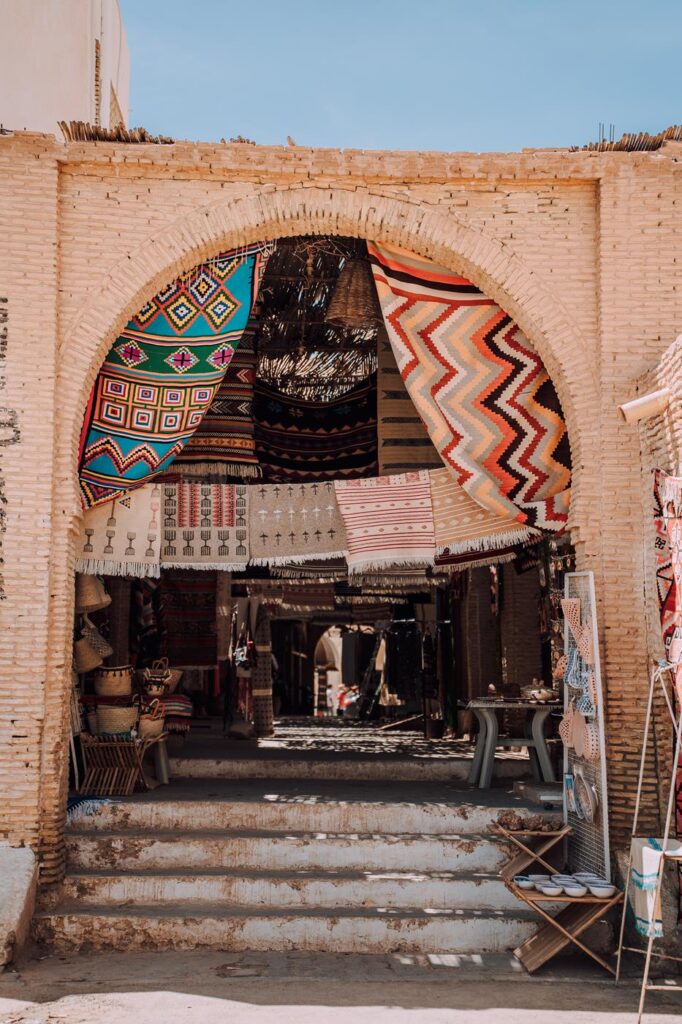
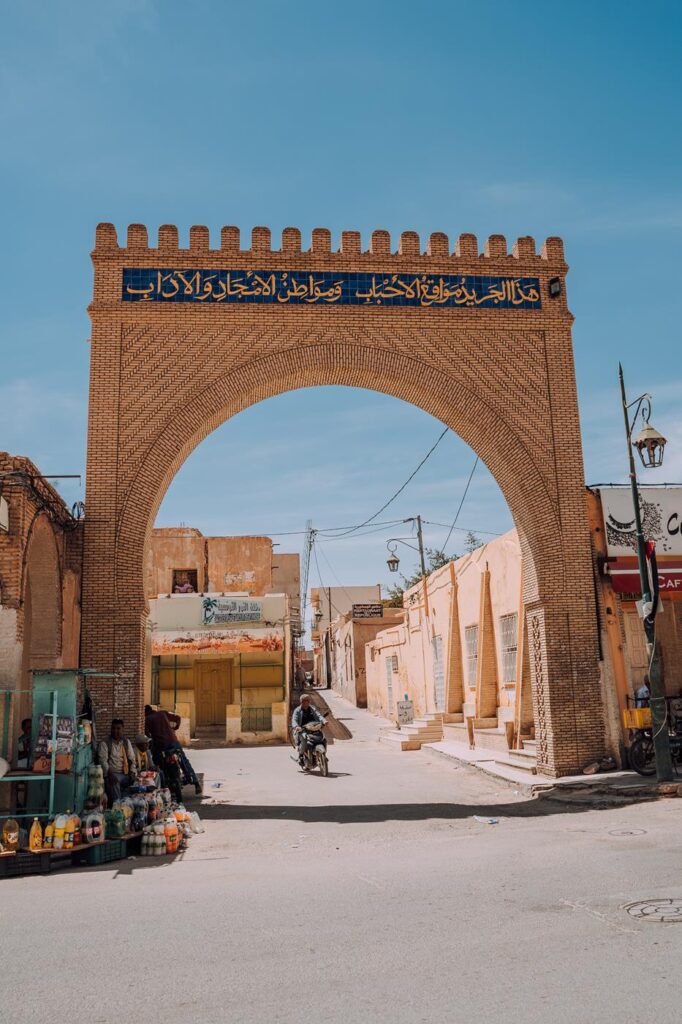
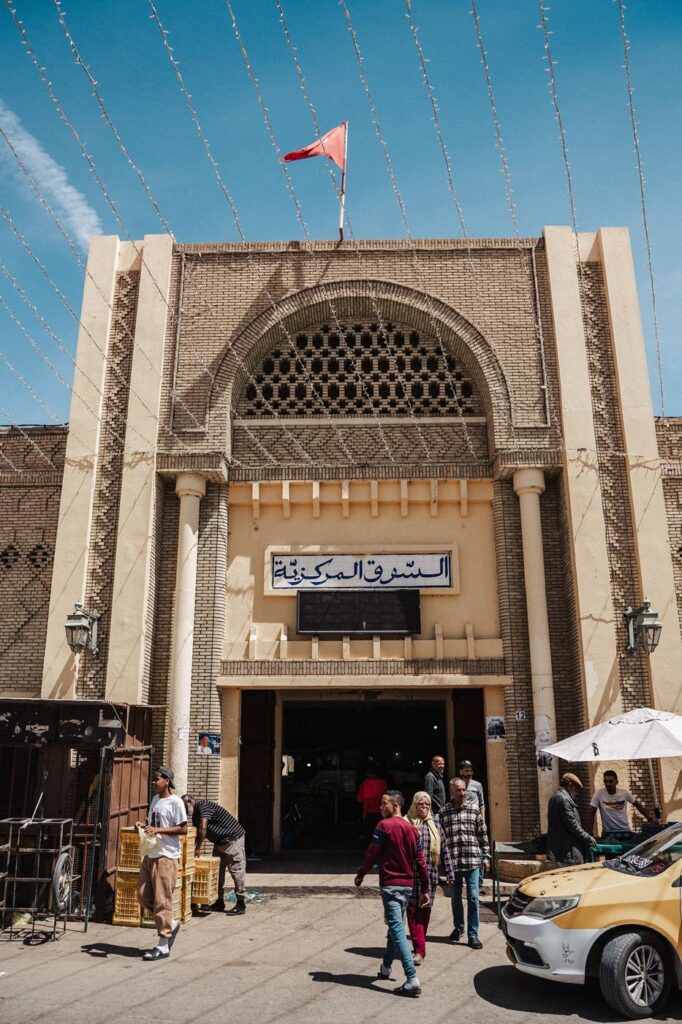
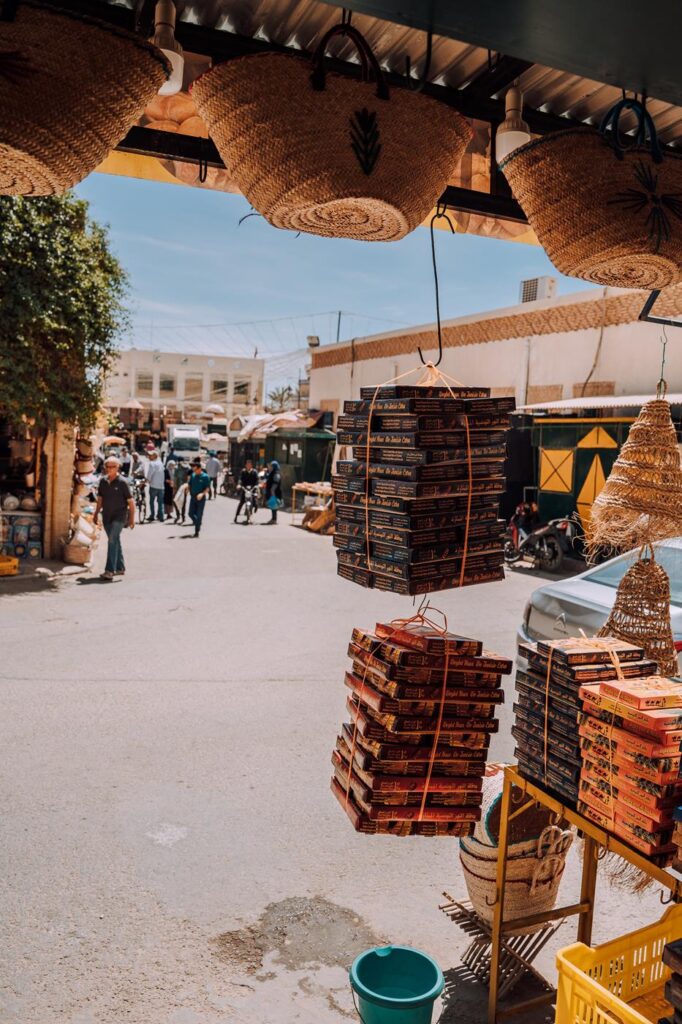
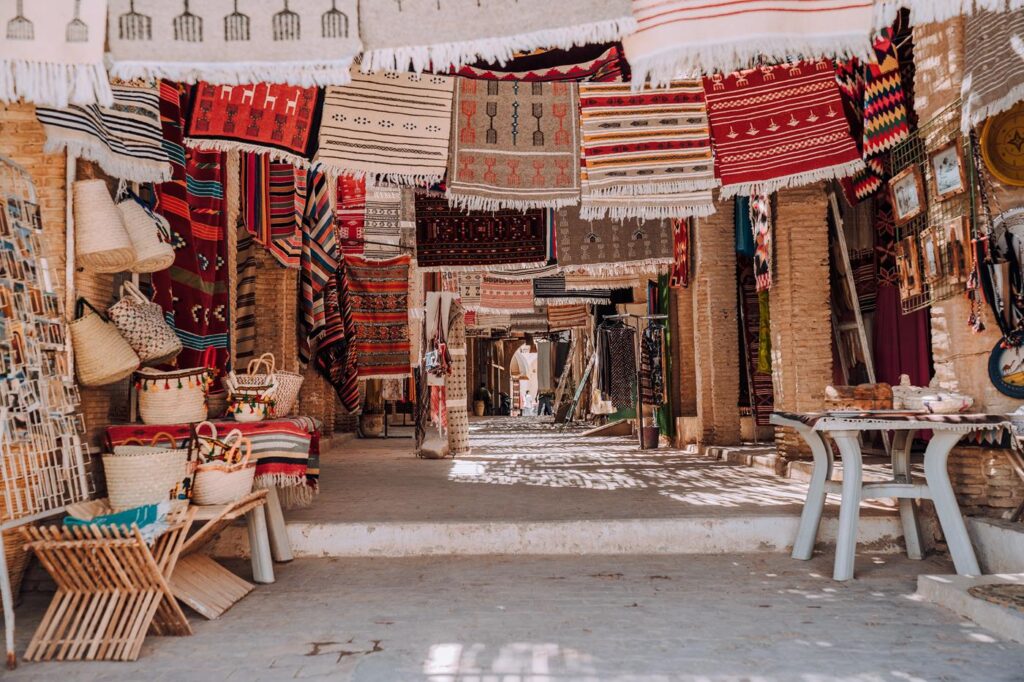
Douz
The 125-kilometer journey from Tozeur to Douz – a small town called the Gateway to the Sahara – took us 2 hours. We passed by a salt lake, which I’ll describe shortly! In Douz, we stayed at El Mouradi hotel.
Salt Lake
Chott el Jerid Lake is the largest salt lake in the Sahara. Its surface area is as much as 5,000 square kilometers! Due to the desert climate, it almost completely dries up in summer, leaving a shiny layer of salt, and during the rainy season, its area fills with water again, creating a salt lake. A road two meters wide runs through it, and that’s the road from Tozeur.
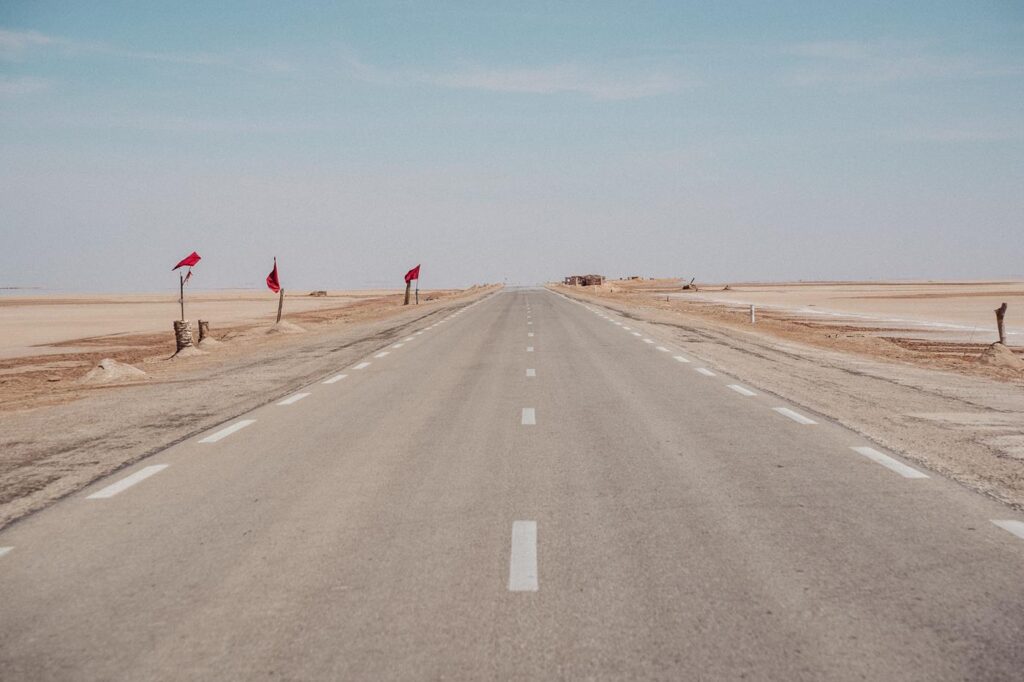
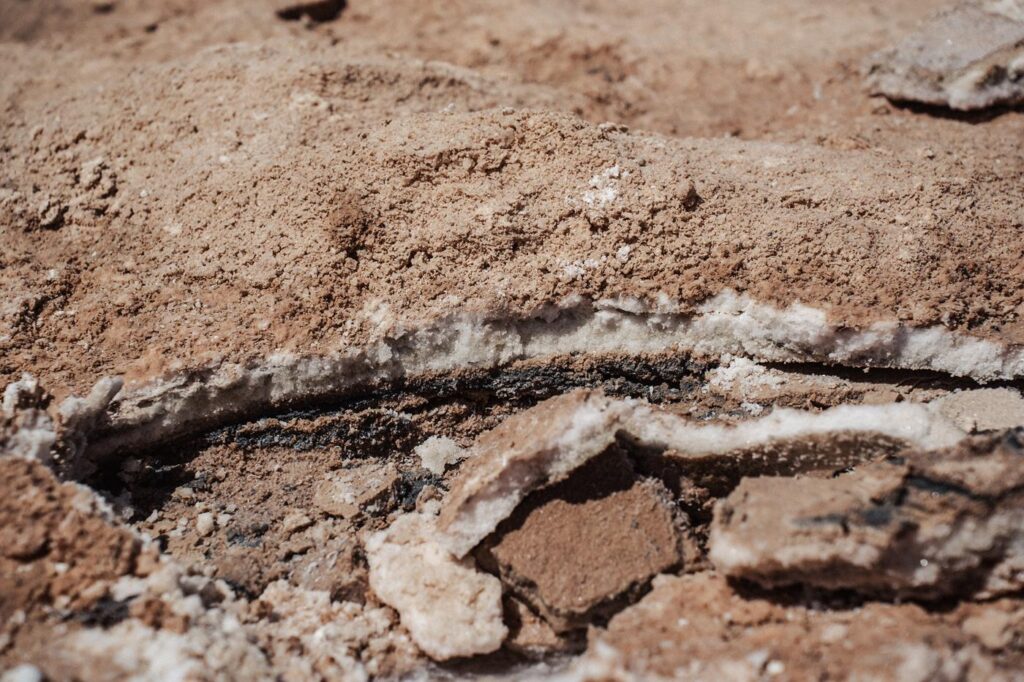
Matmata
After covering 90 kilometers, which took us an hour, we found ourselves in Matmata, where we learned about Berber culture.
Troglodyte House
Berbers are the indigenous inhabitants of ancient Berberia. One such people are the so-called troglodytes. Representatives of this people live in the Matmata region. Some of them still live in houses carved into sandy-clay rocks – these ancient structures helped to protect against extreme temperatures. While visiting one of these houses, we had the opportunity to try traditionally baked bread with olive oil and honey!
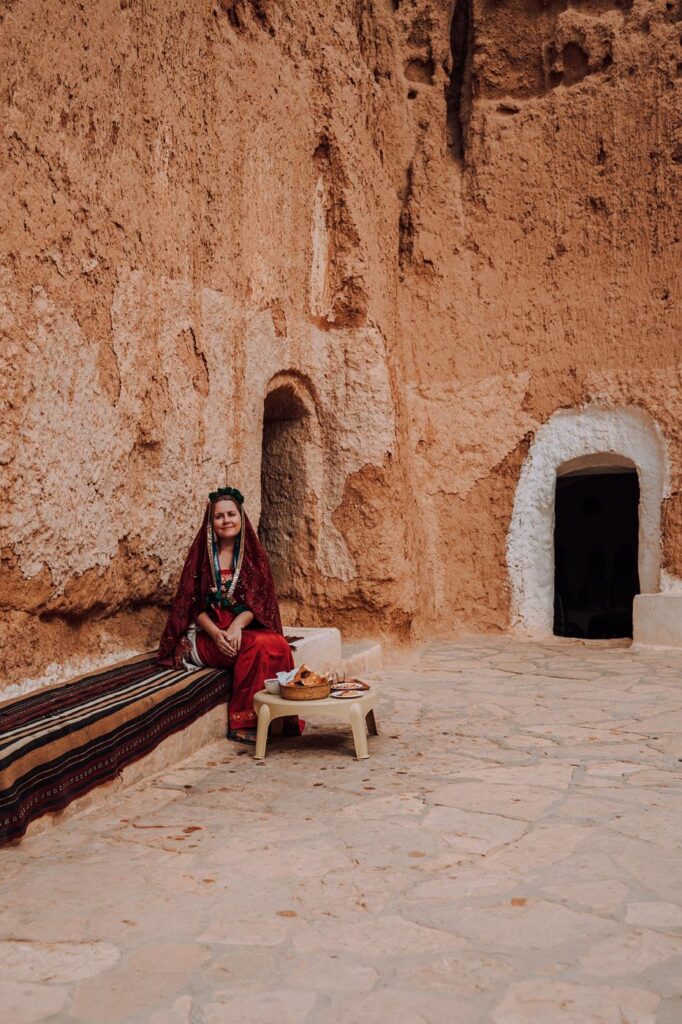
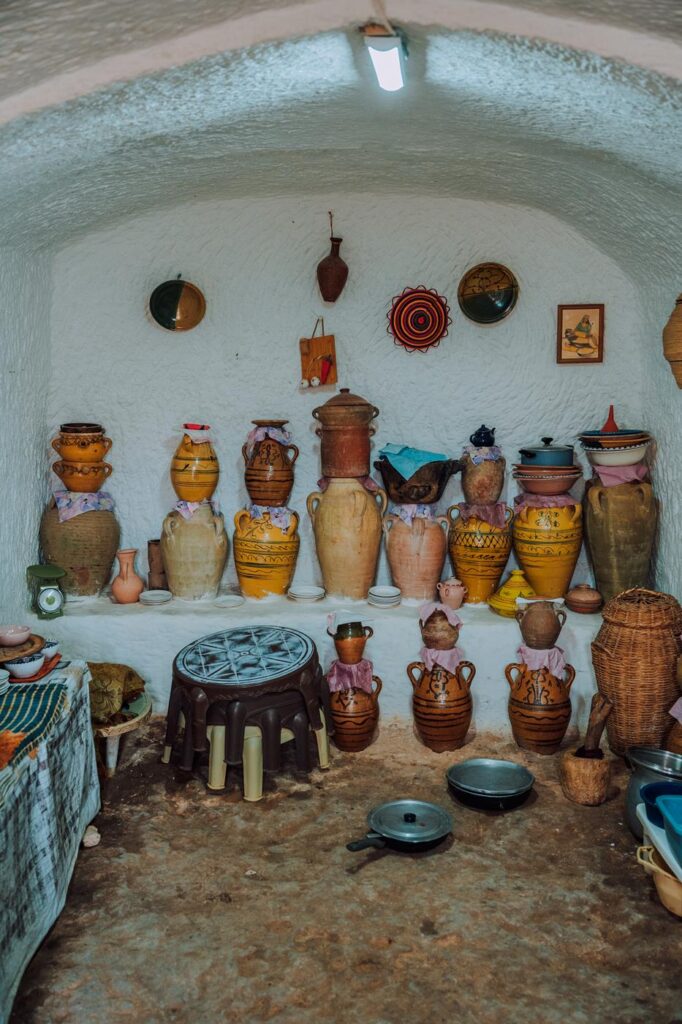
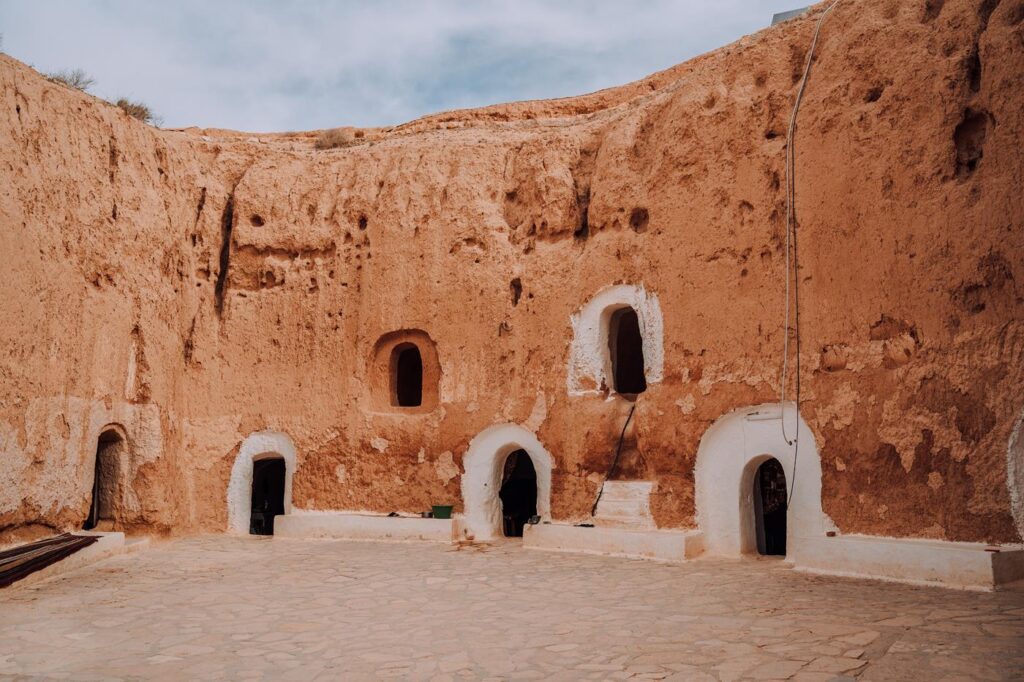
Star Wars Hotel
The Sidi Driss Hotel has become one of the most famous places where “Star Wars” was filmed. It is colloquially called the “Star Wars hotel”. It’s a traditional Berber house. In the movie, it served as the Lars Homestead on Tatooine. The hotel, with its intact decorations, is open all year round. A restaurant has been opened on its premises, where you can eat in the same place as in the movie!
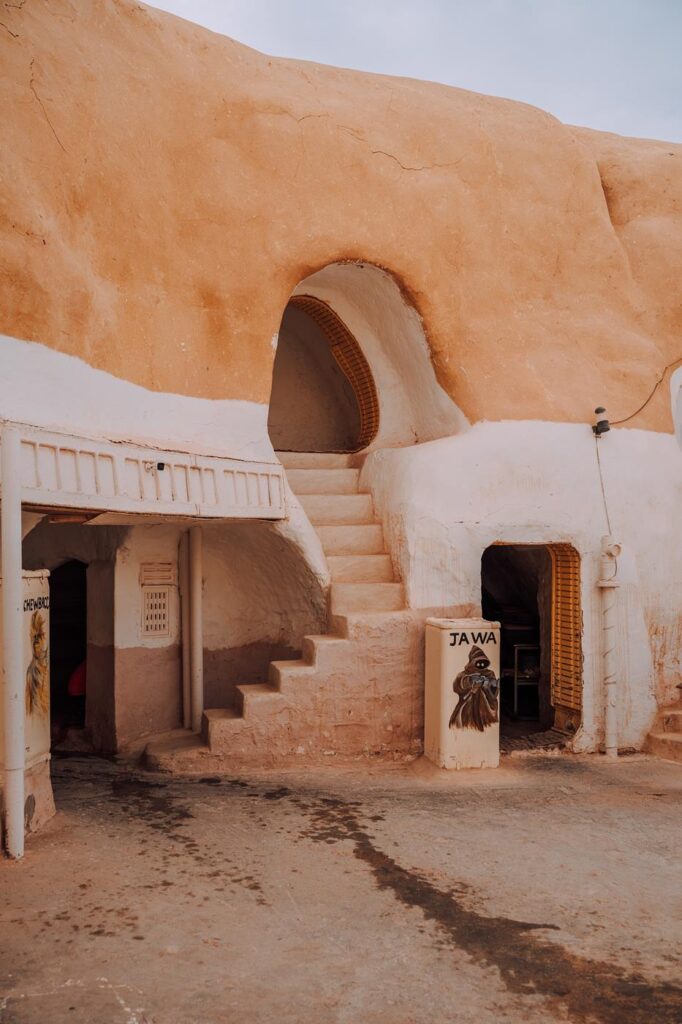
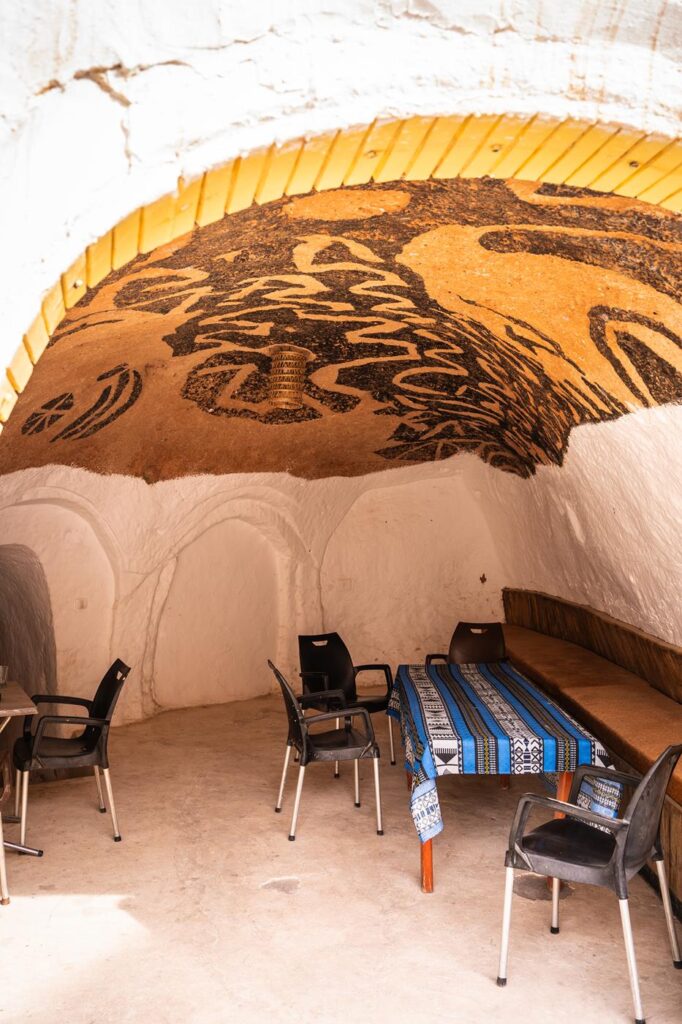
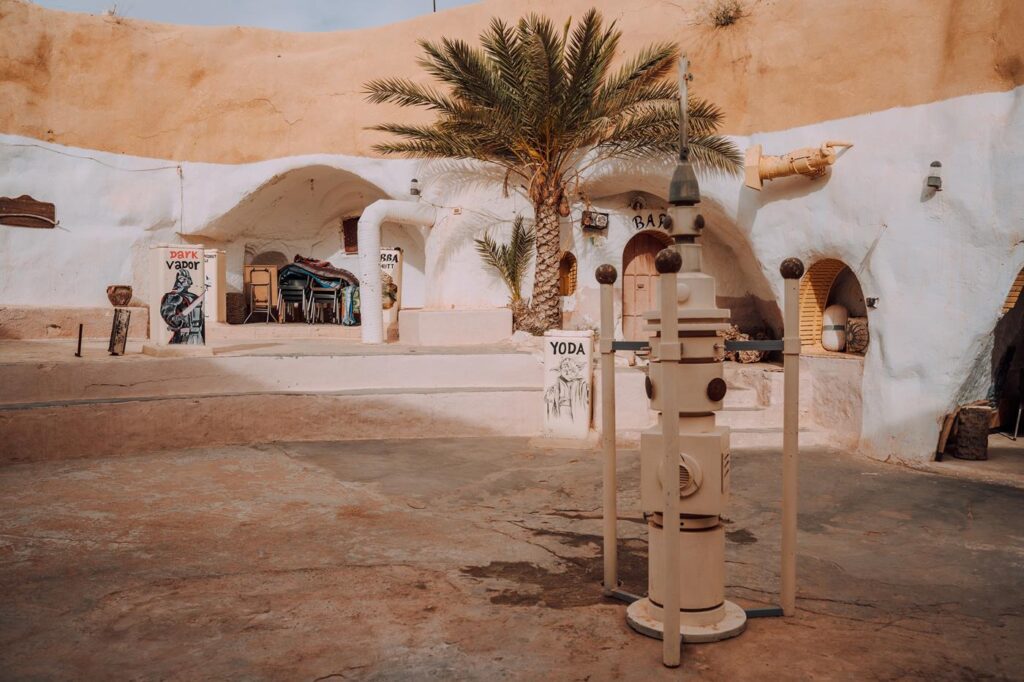
Ksar Ghilane
From Matmata, we traveled for an hour and a half to see the oasis of Ksar Ghilane, which is 120 kilometers away! This oasis is fed by a hot spring (a small lake) with thermal properties, where you can bathe. Interestingly, the oasis serves as a refuge for dozens of nomadic families who live off the sale of dates and animal husbandry, as well as tourism.
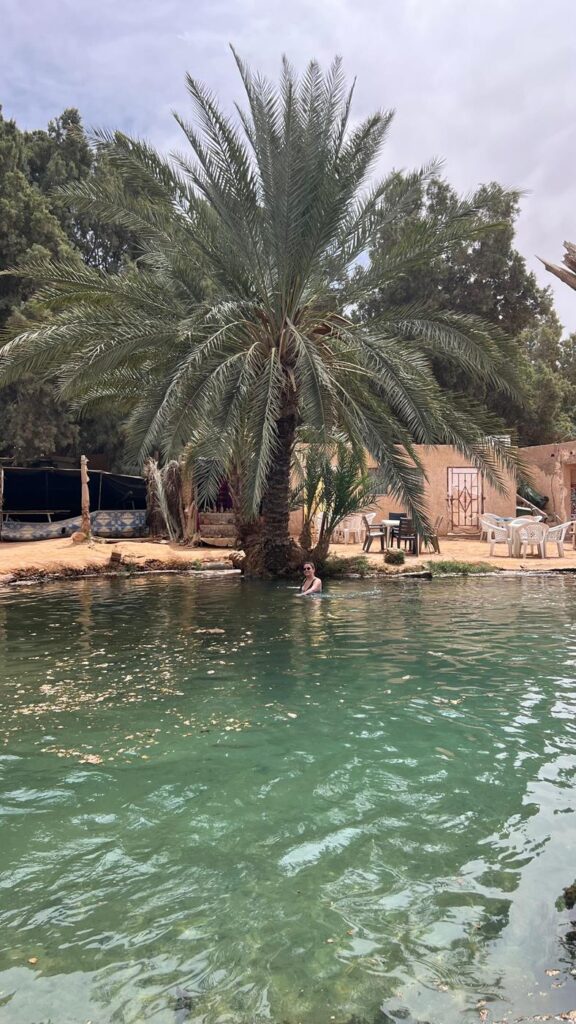
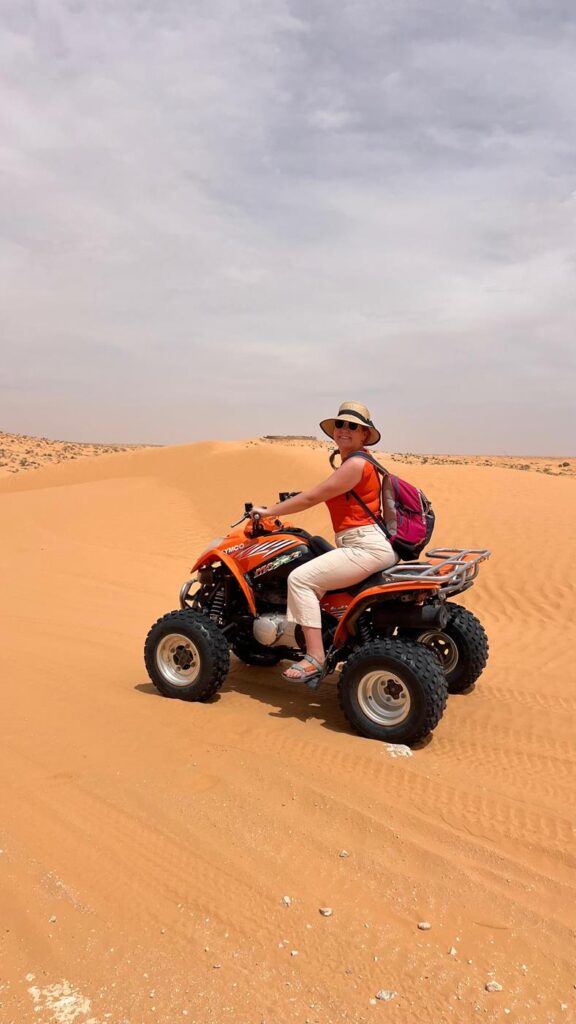
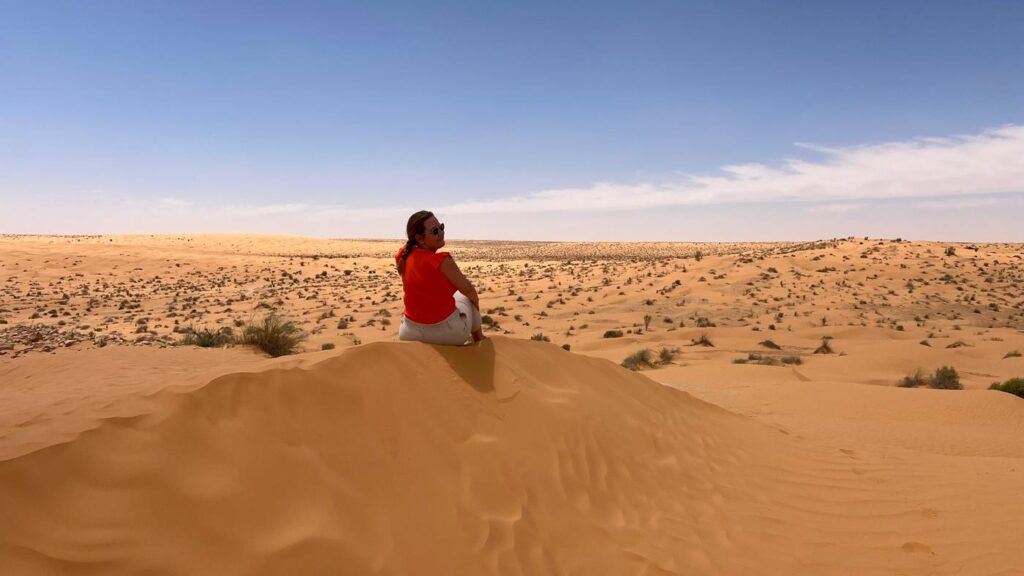
Tataouine
After covering another 150 km (in 2 and a half hours), we landed in a place whose name you surely recognize: Tataouine! Region is famous for its surrounding ksars (fortified granaries). It became known thanks to being a filming location for “Star Wars,” which is easy to decipher because the city lent its name to the desert planet Tatooine. Here, we stayed in an unusual hotel, a cave at Douiret!
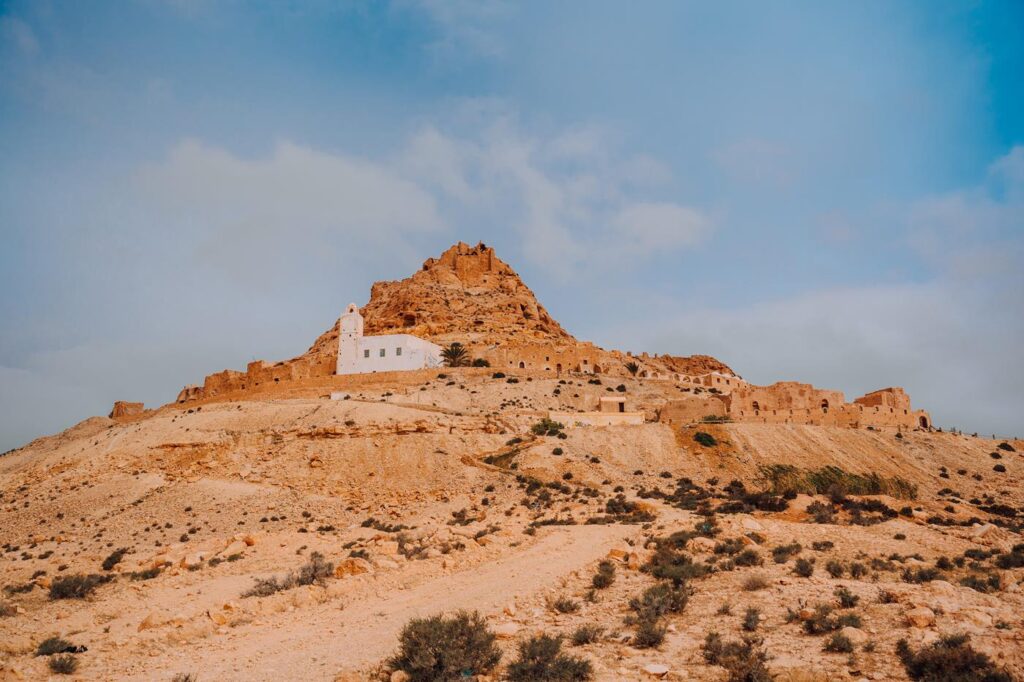
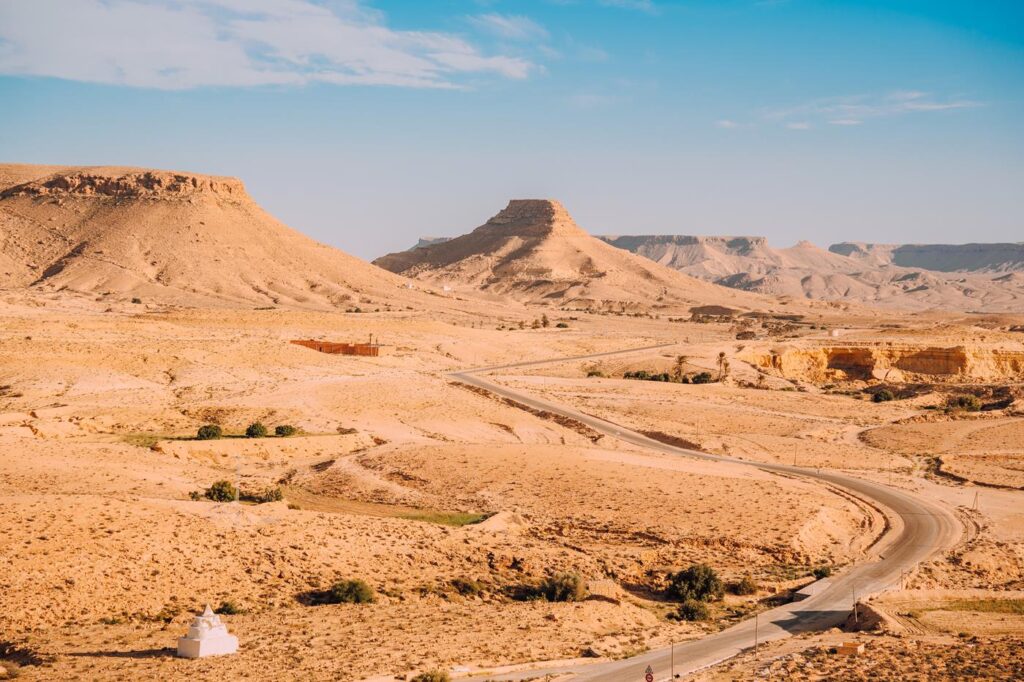
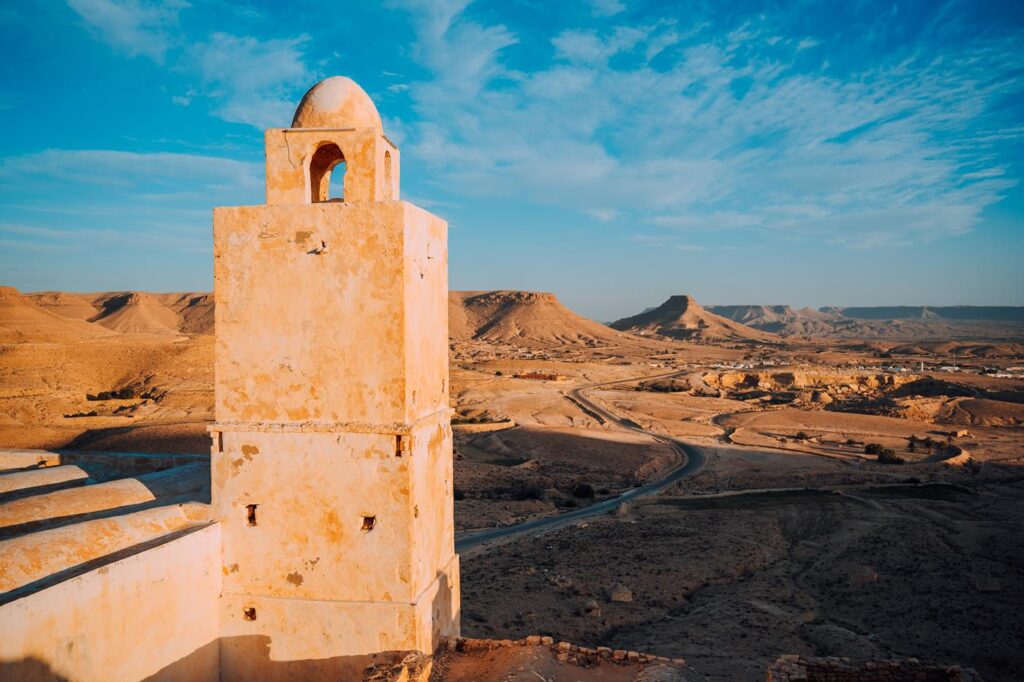
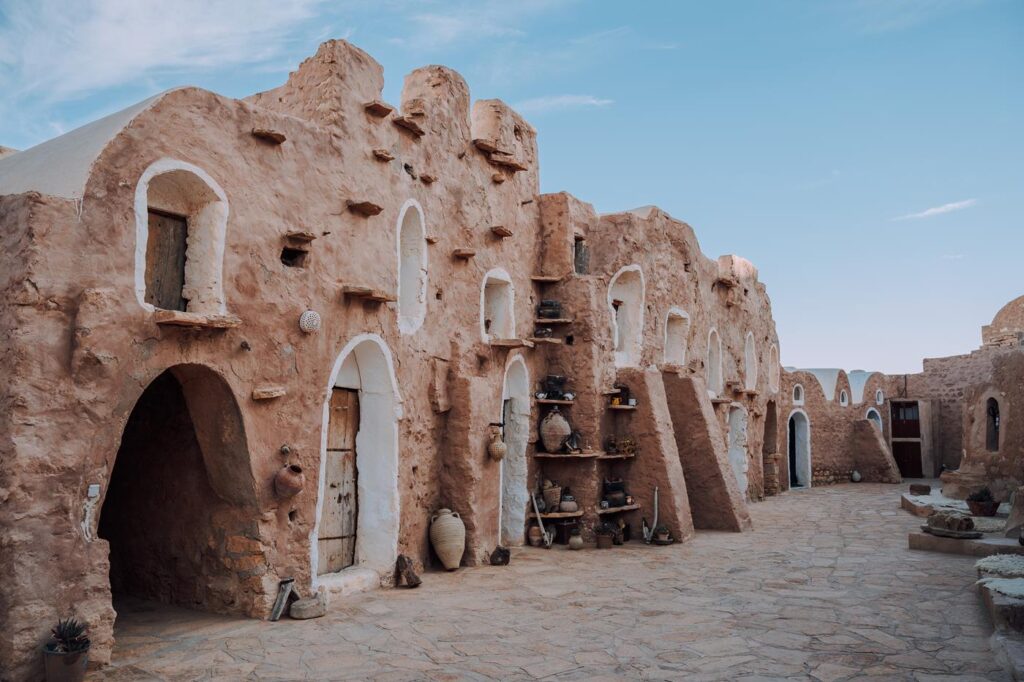
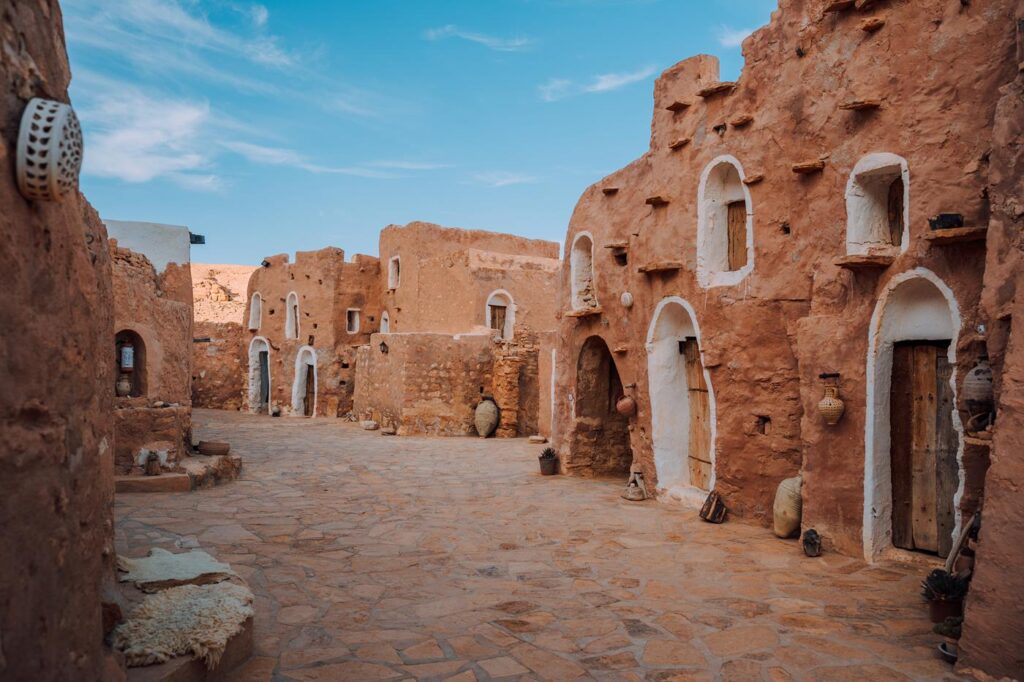
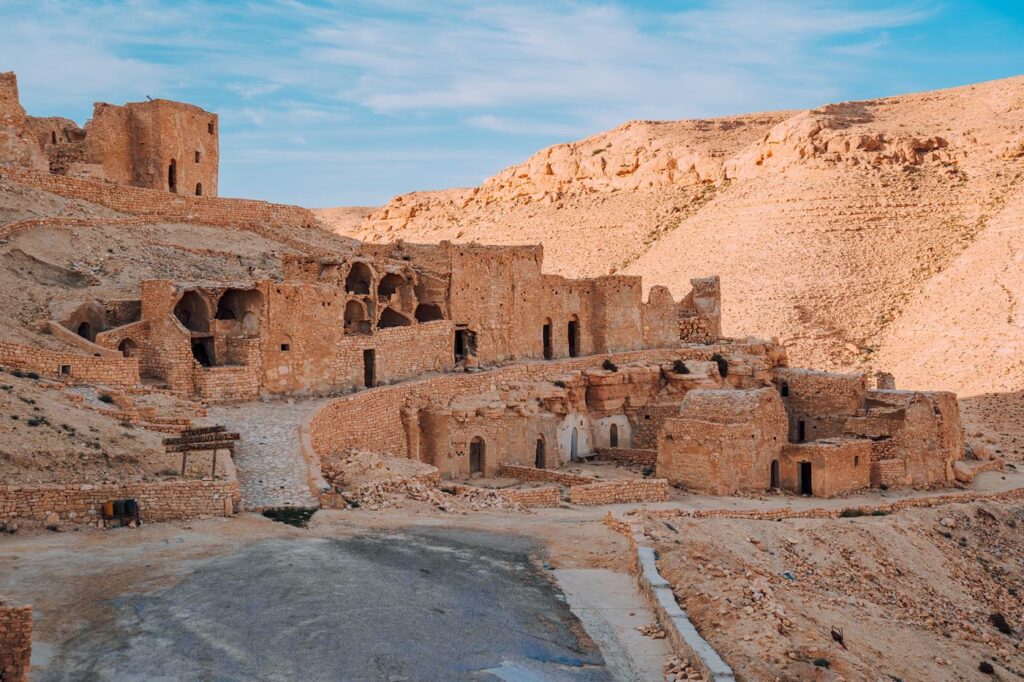
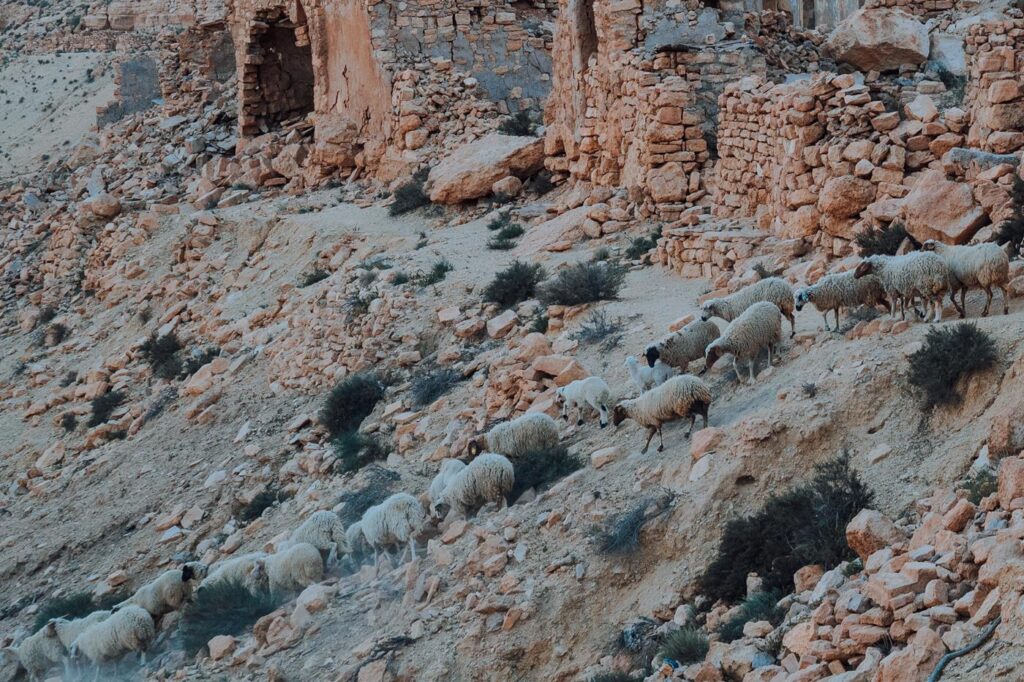
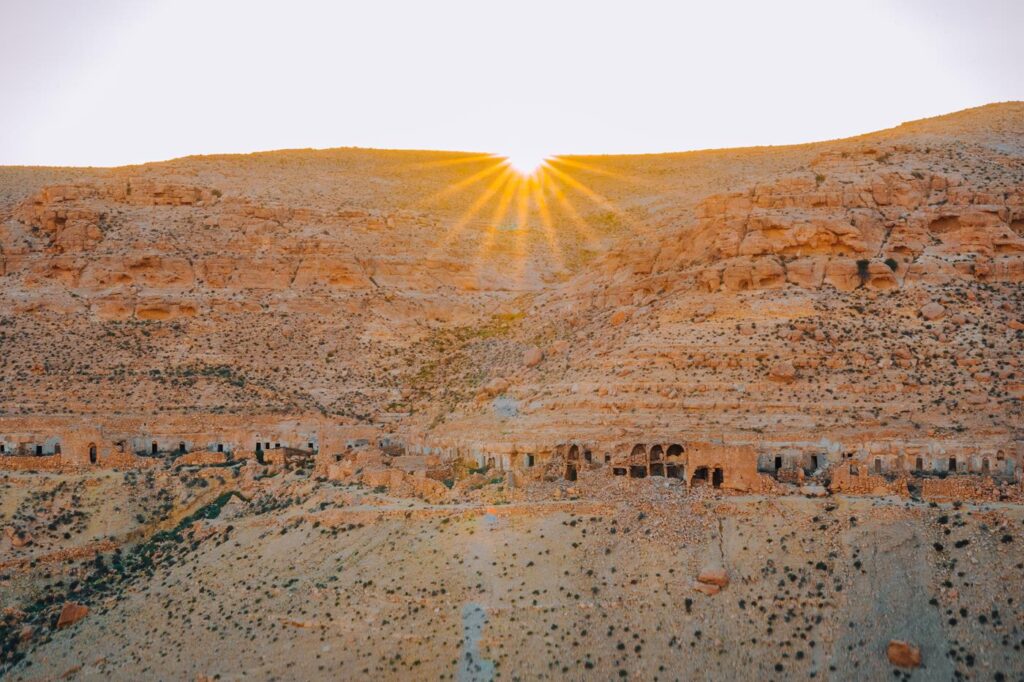
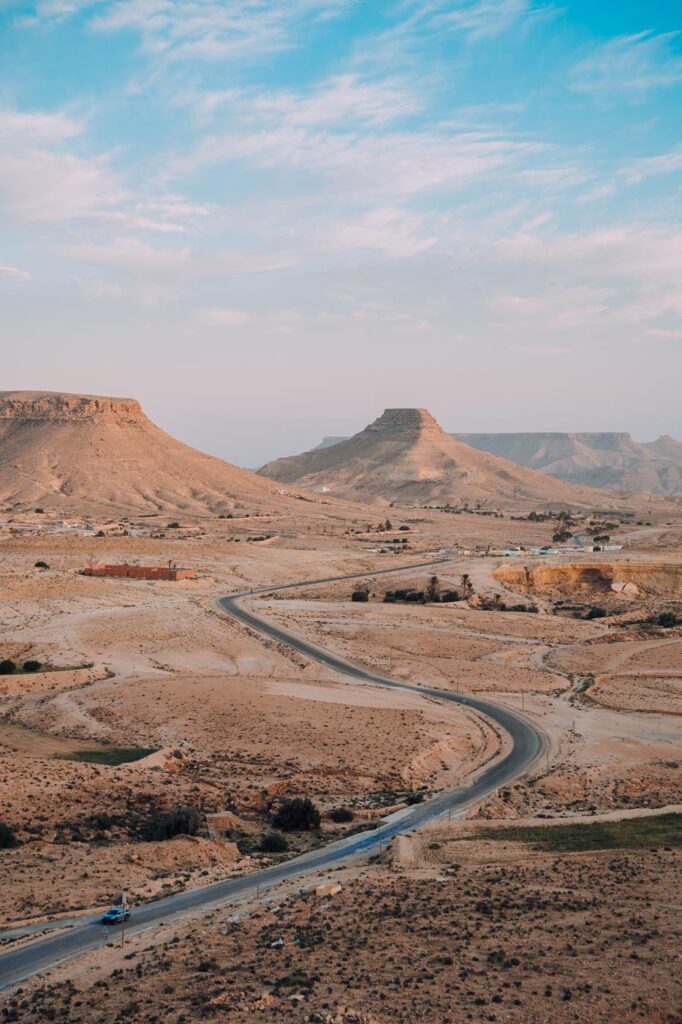
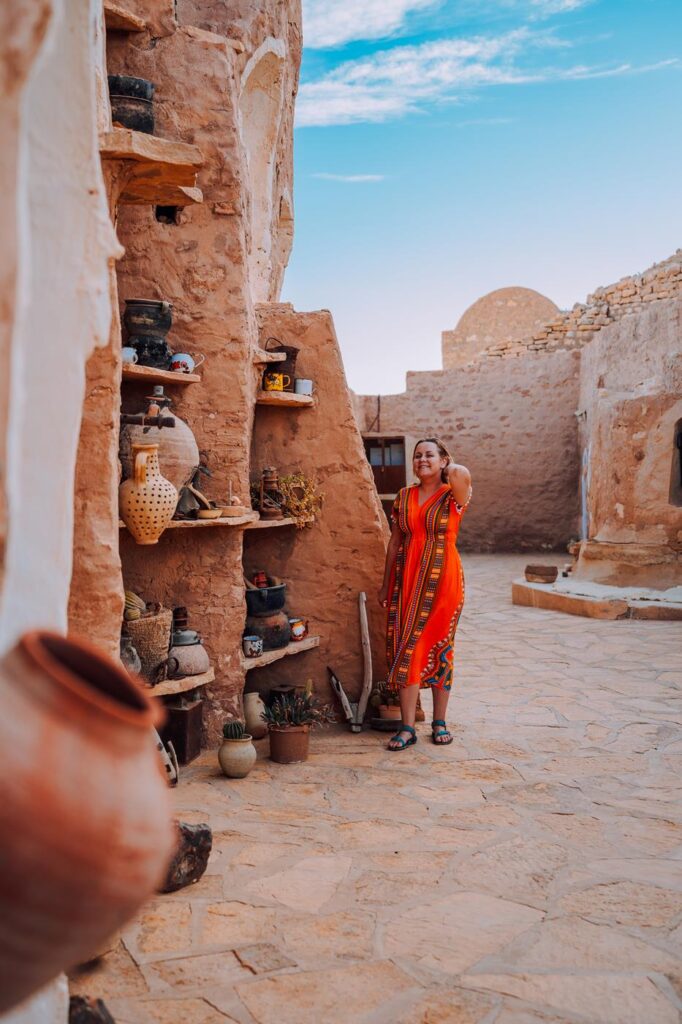
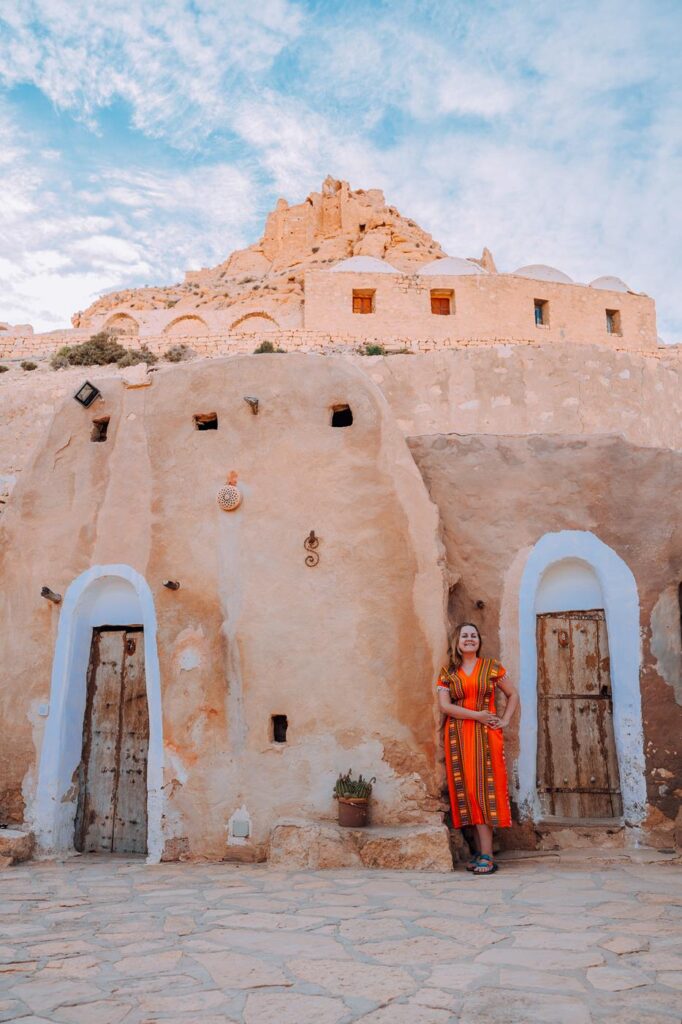
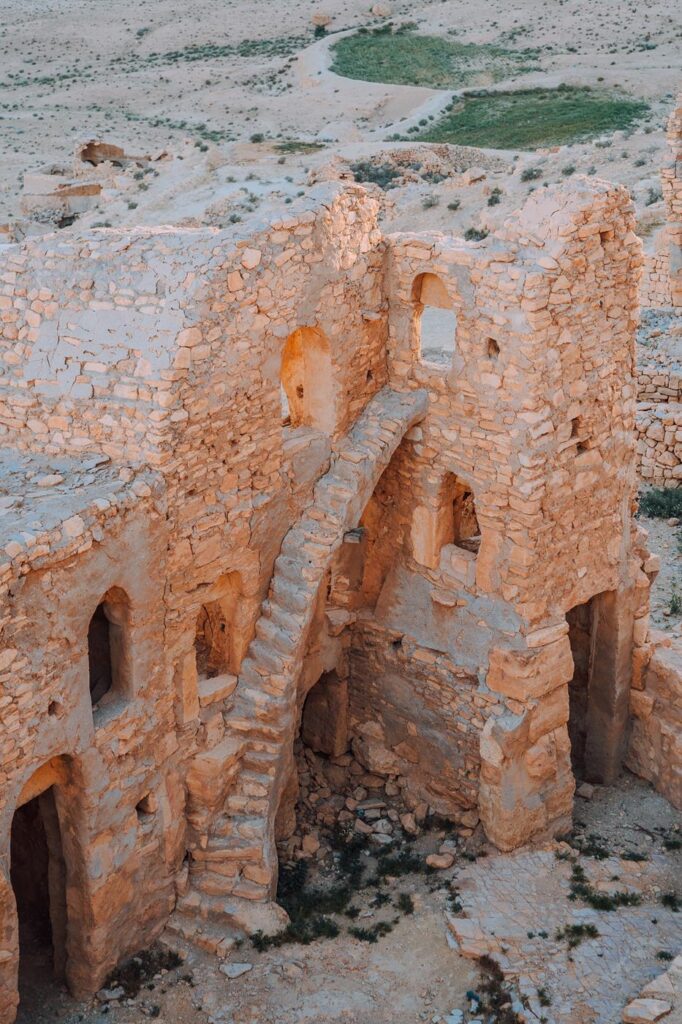
Chenini
Thirty minutes from Gîte Douiret, 30 kilometers from the city, lies Chenini, a ruined Berber village. Located on a hill near a contemporary village of the same name, Chenini was a fortified granary built between two hills. The oldest structures on the hillside date back to the 12th century. In 2023, about five hundred Berber shepherds and farmers still lived in the rock houses of Chenini.
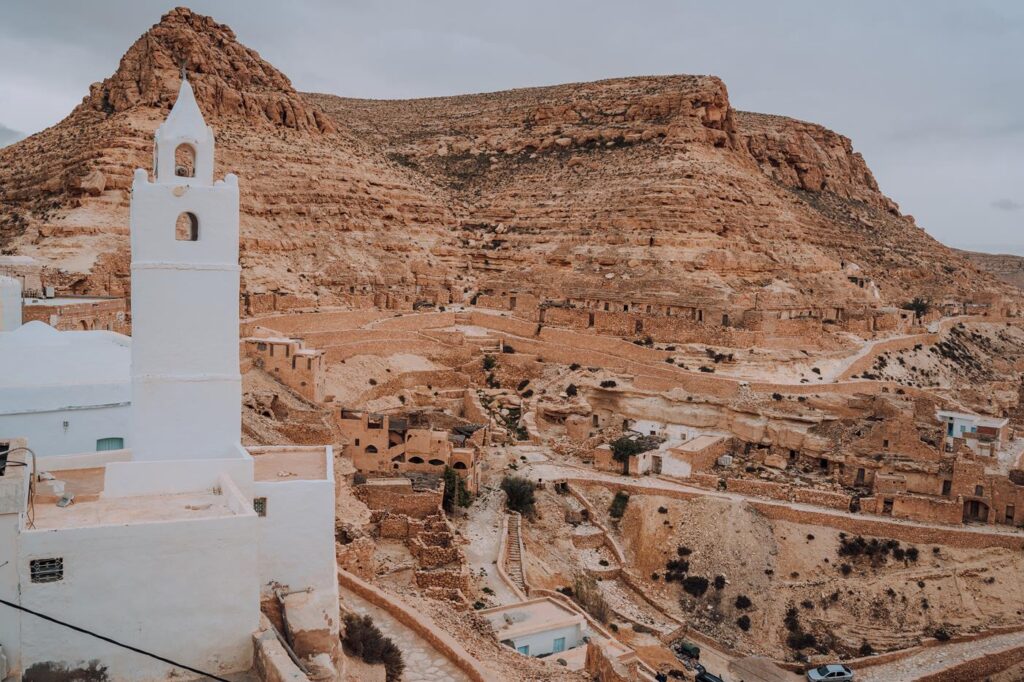
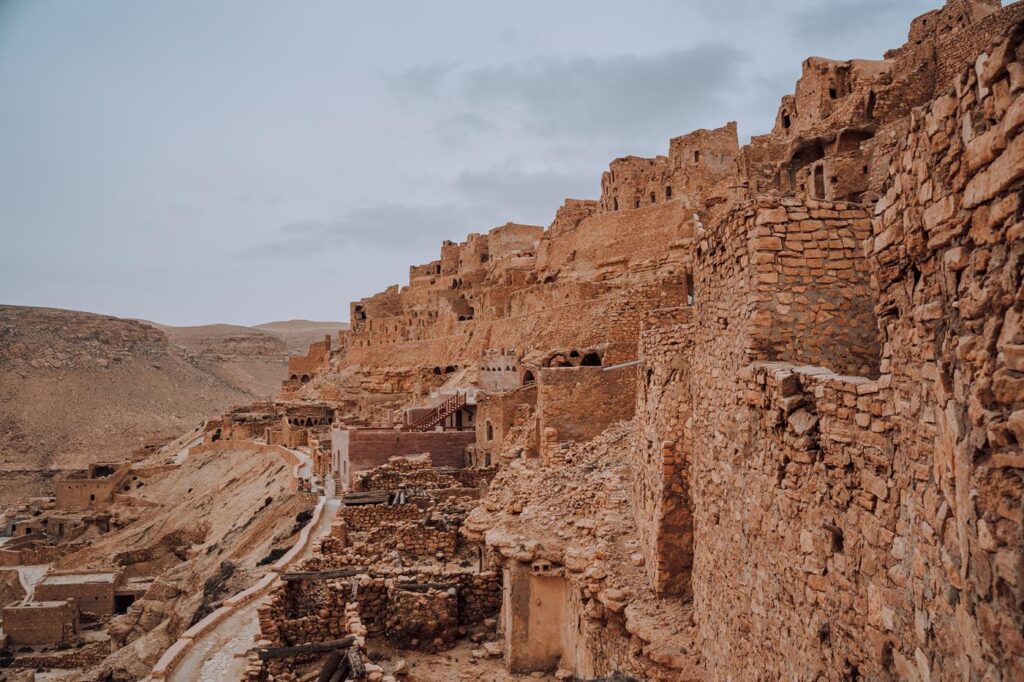
Ksar Ouled Soltane
Another forty kilometers (just over half an hour’s drive) and we saw Ksar Ouled Soltane. It is also a fortified, multi-level granary built by the Berbers in the 15th century. It is very well preserved. This ksar occupies the area of two courtyards and has over 400 individual food storage cells.
Ksar Ouled Soltane also appeared in the movie “Star Wars: Episode I – The Phantom Menace” in some scenes depicting the slave quarters in Mos Espa, where the character Anakin Skywalker lived as a boy.
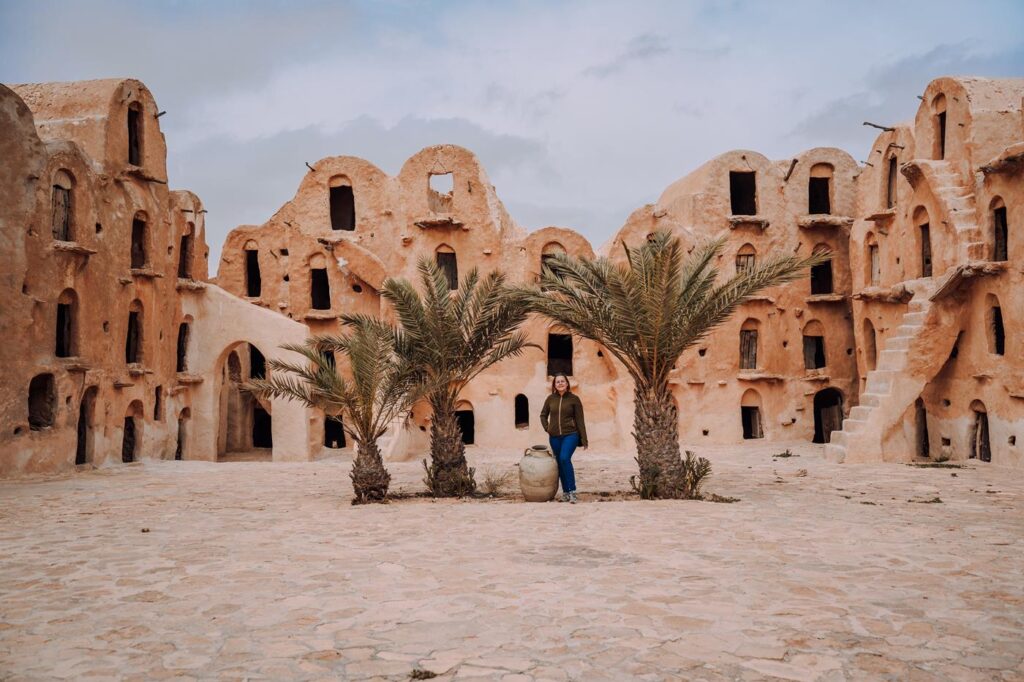
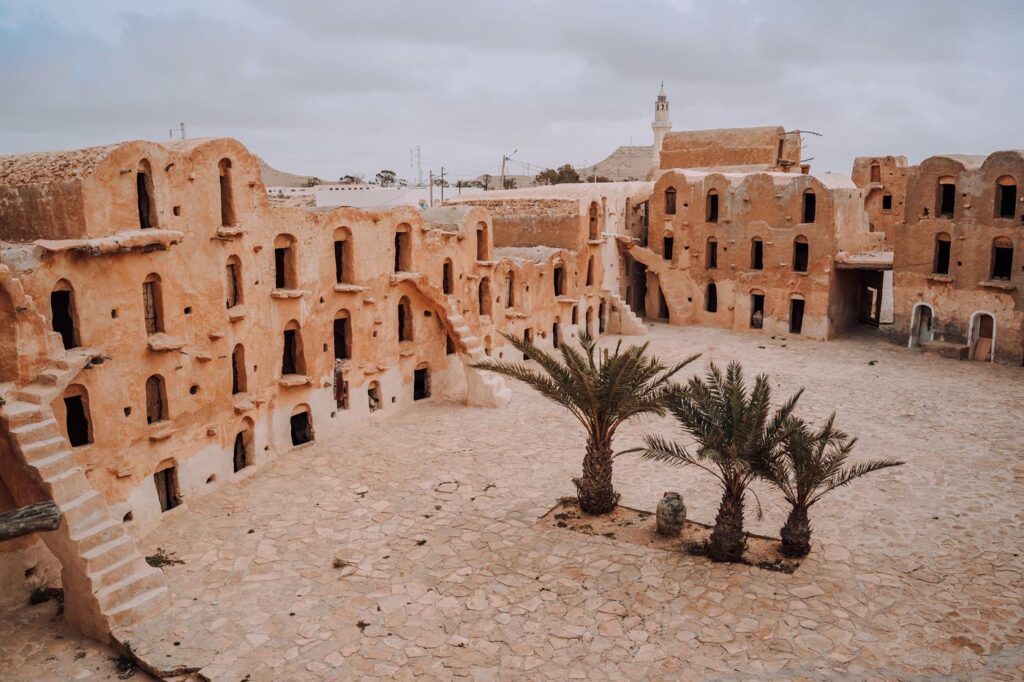
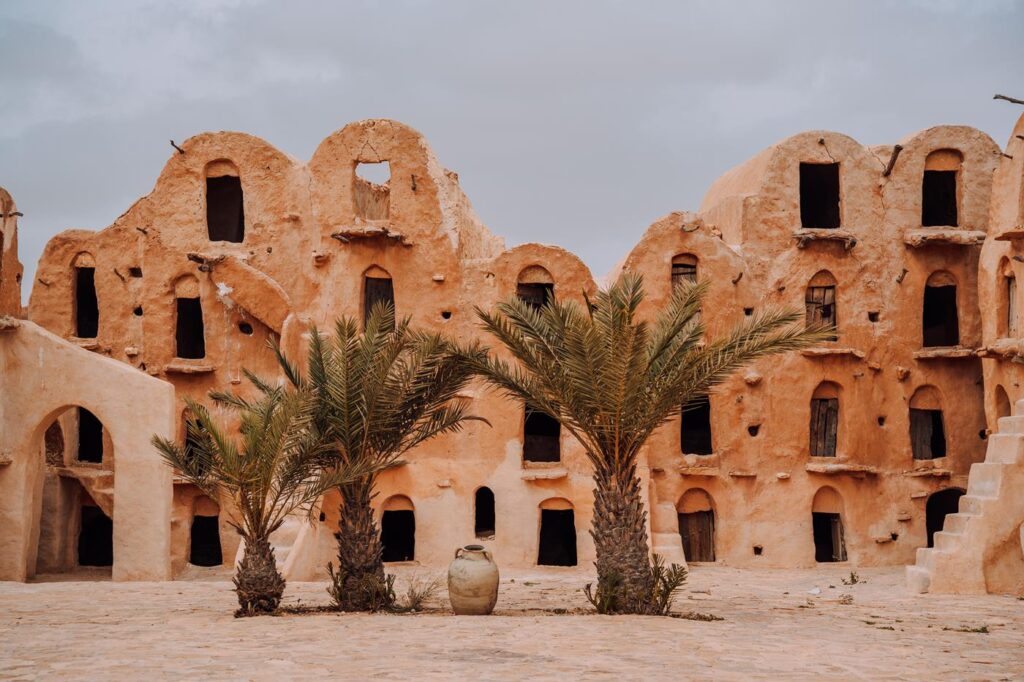
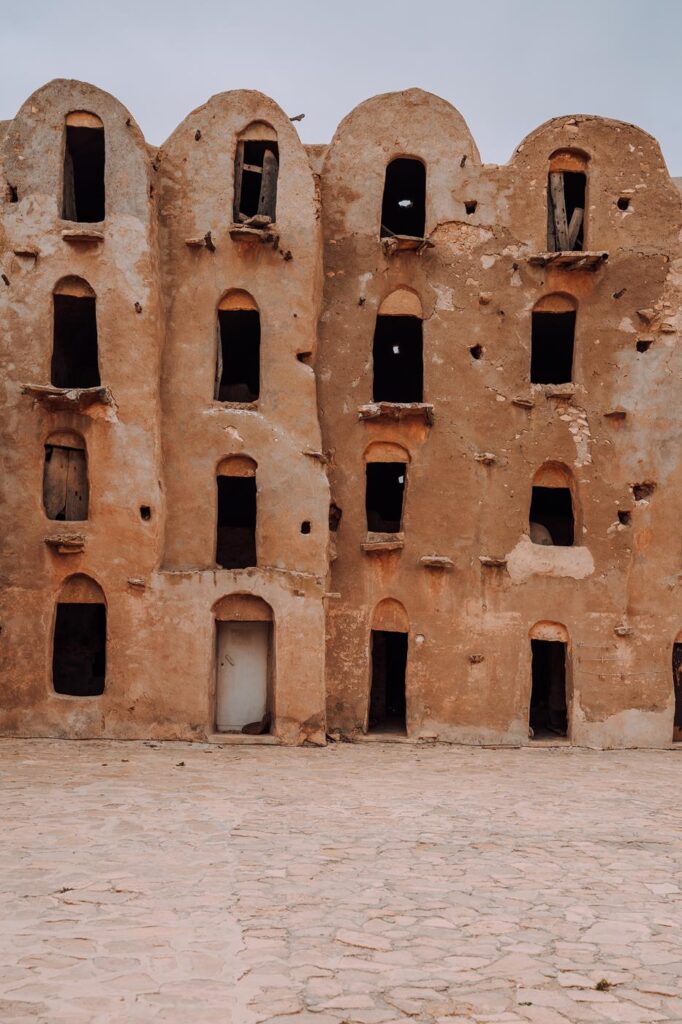

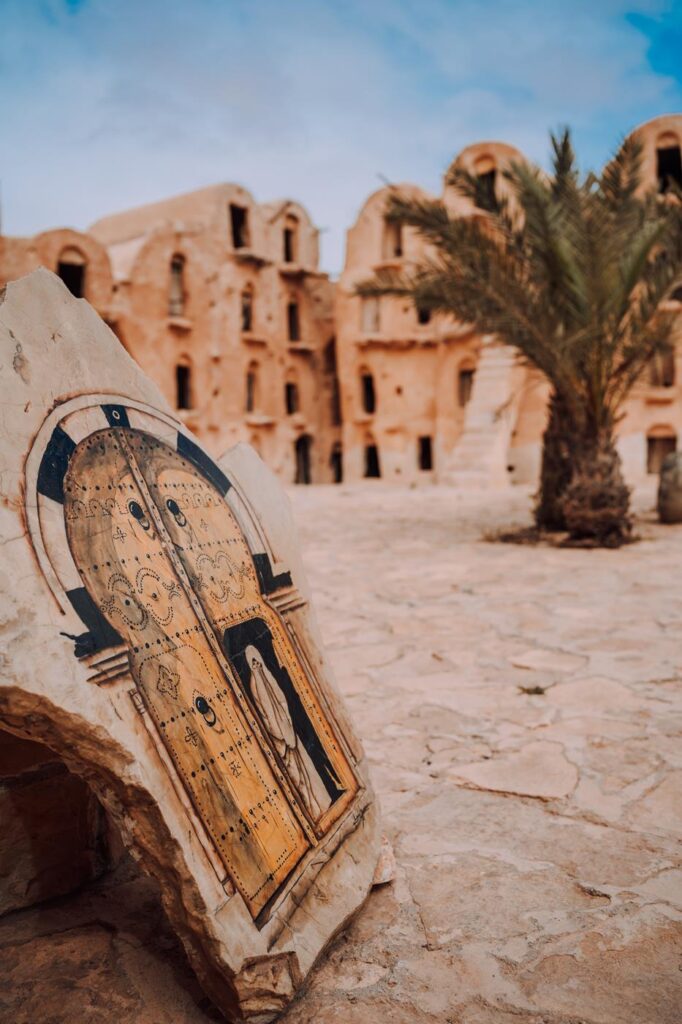
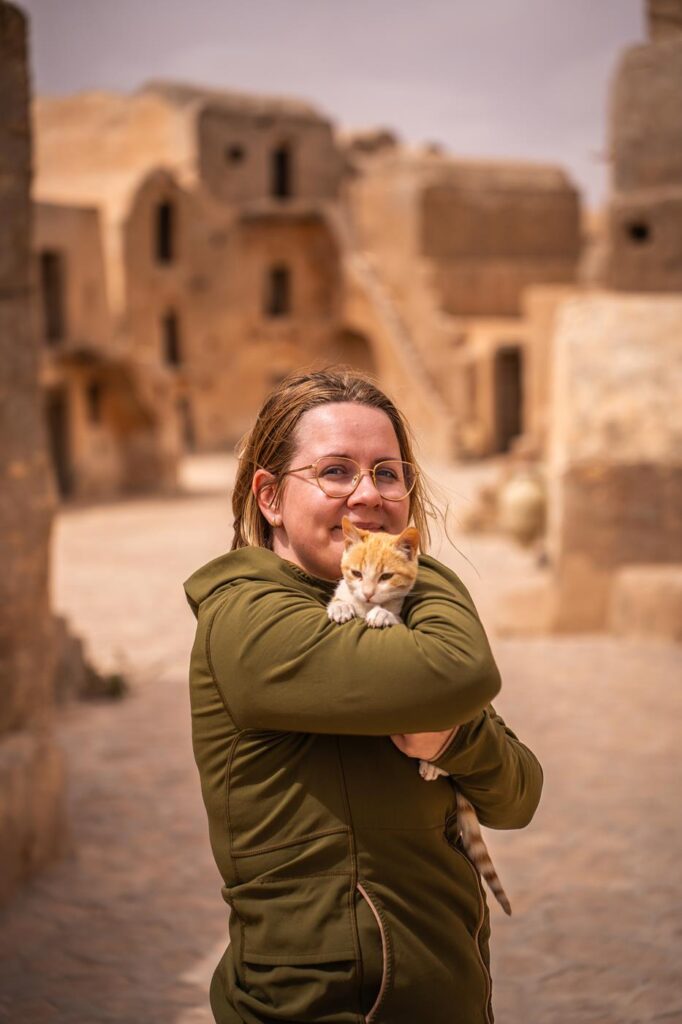
Ksar Ouled Soltane – Djerba
After two hours and covering 150 kilometers, our trip ended in Djerba, from where we set off! This time we stayed at Ulysse Djerba Thalasso & SPA.
Although it’s known that you can’t see everything during one trip, I consider this one to Tunisia a fantastic experience during which we managed to see quite a lot! Organized tours with a guide are, in my opinion, the best way to get the most out of such trips. Have you been to Tunisia yet? Let me know!